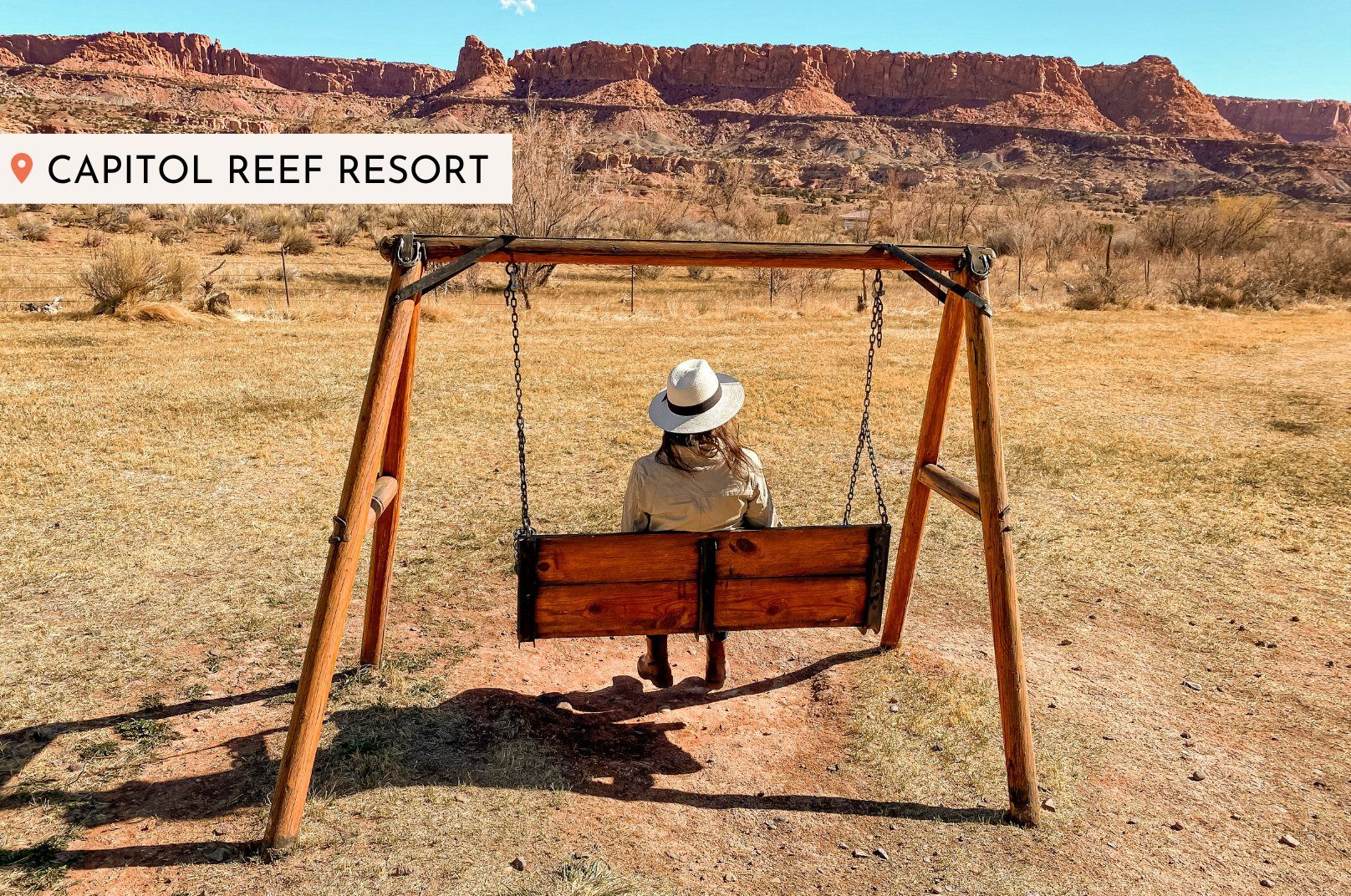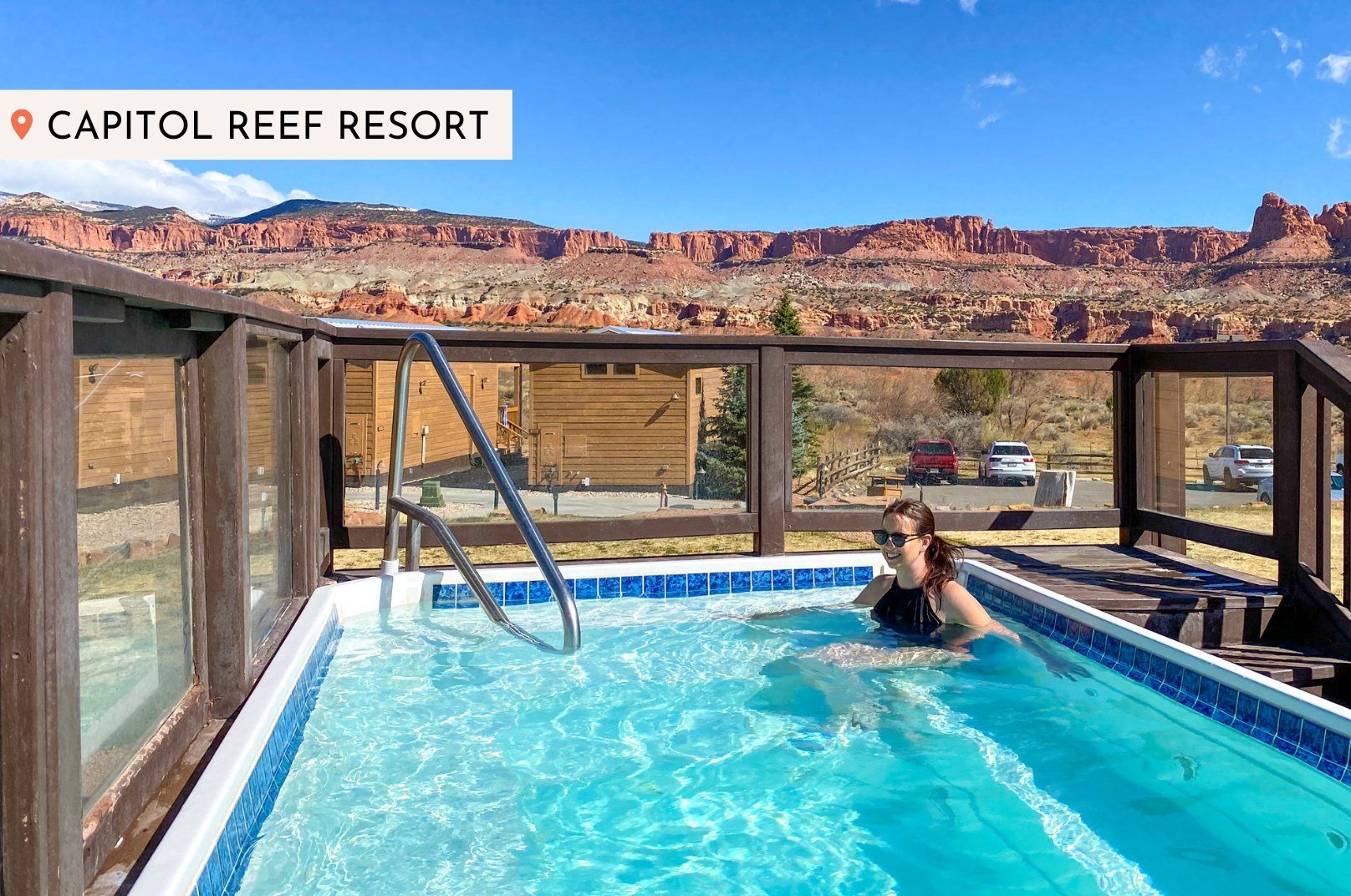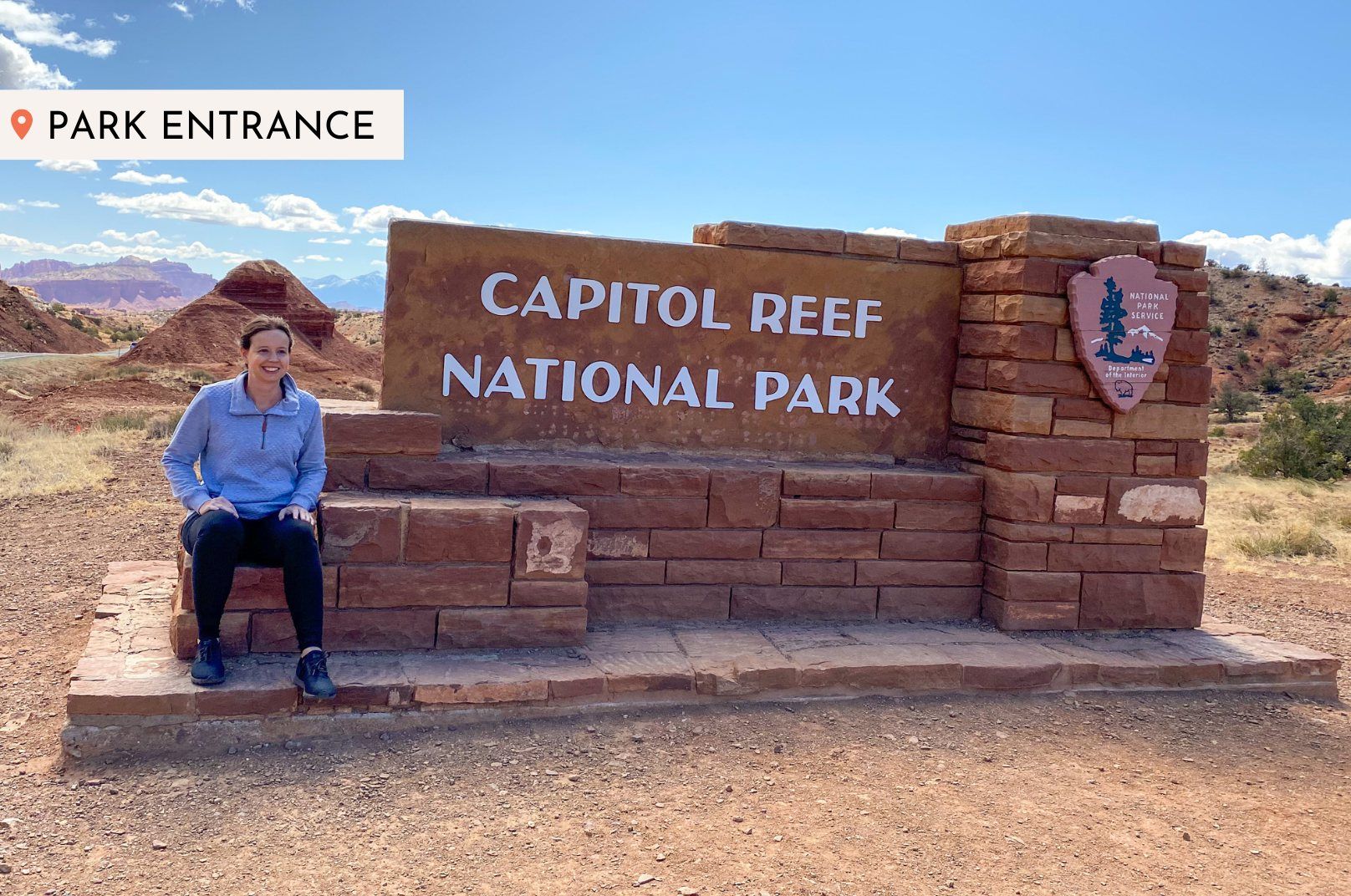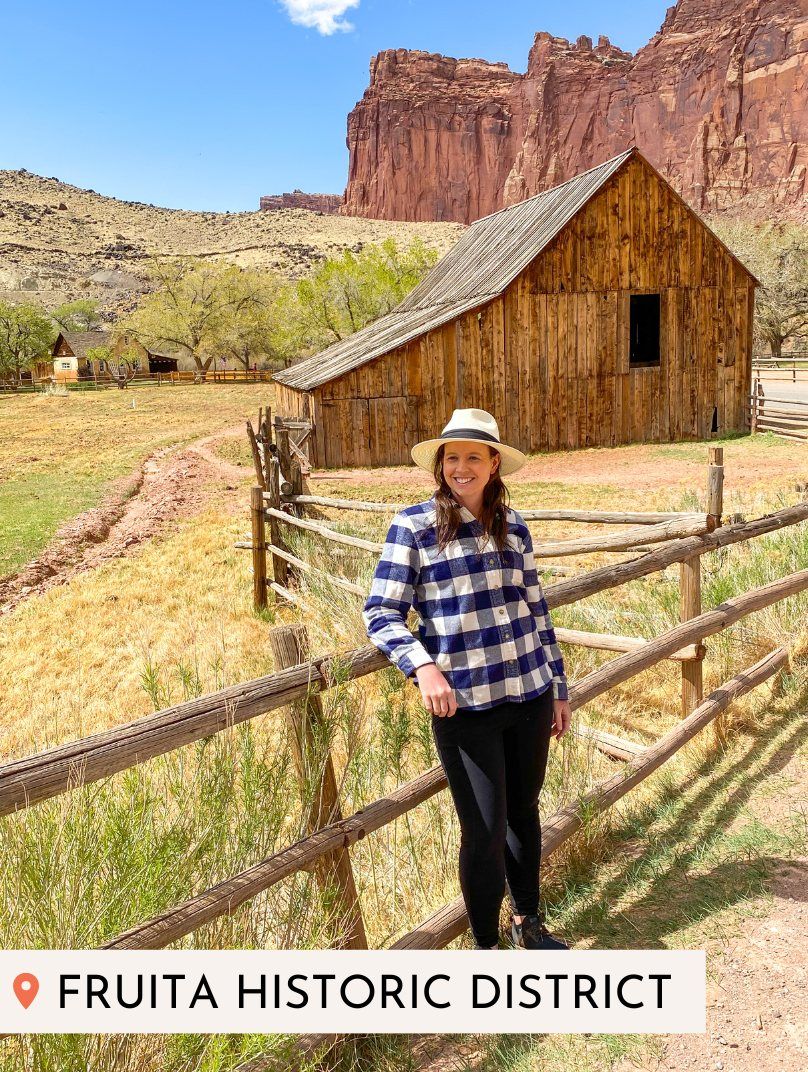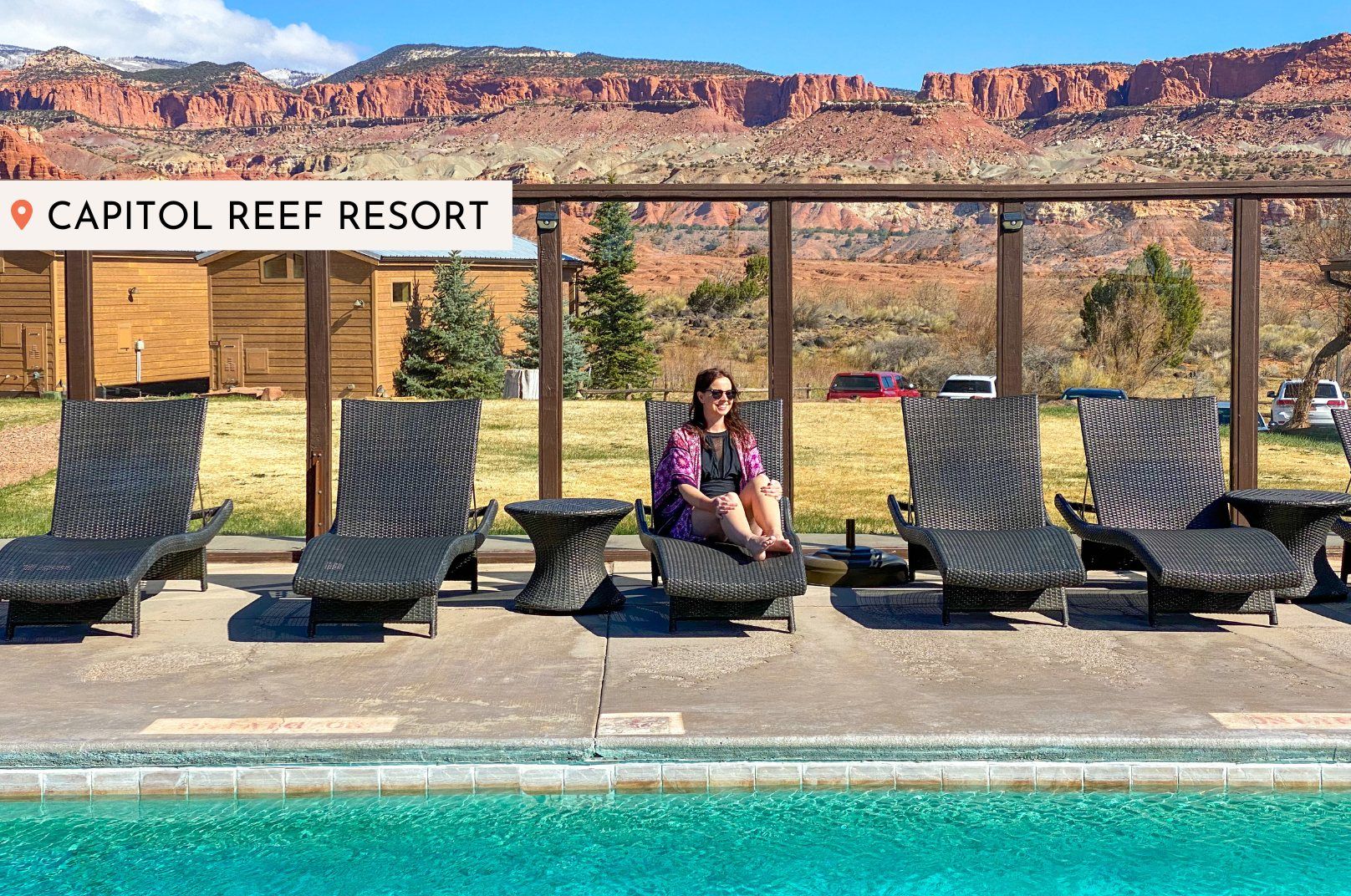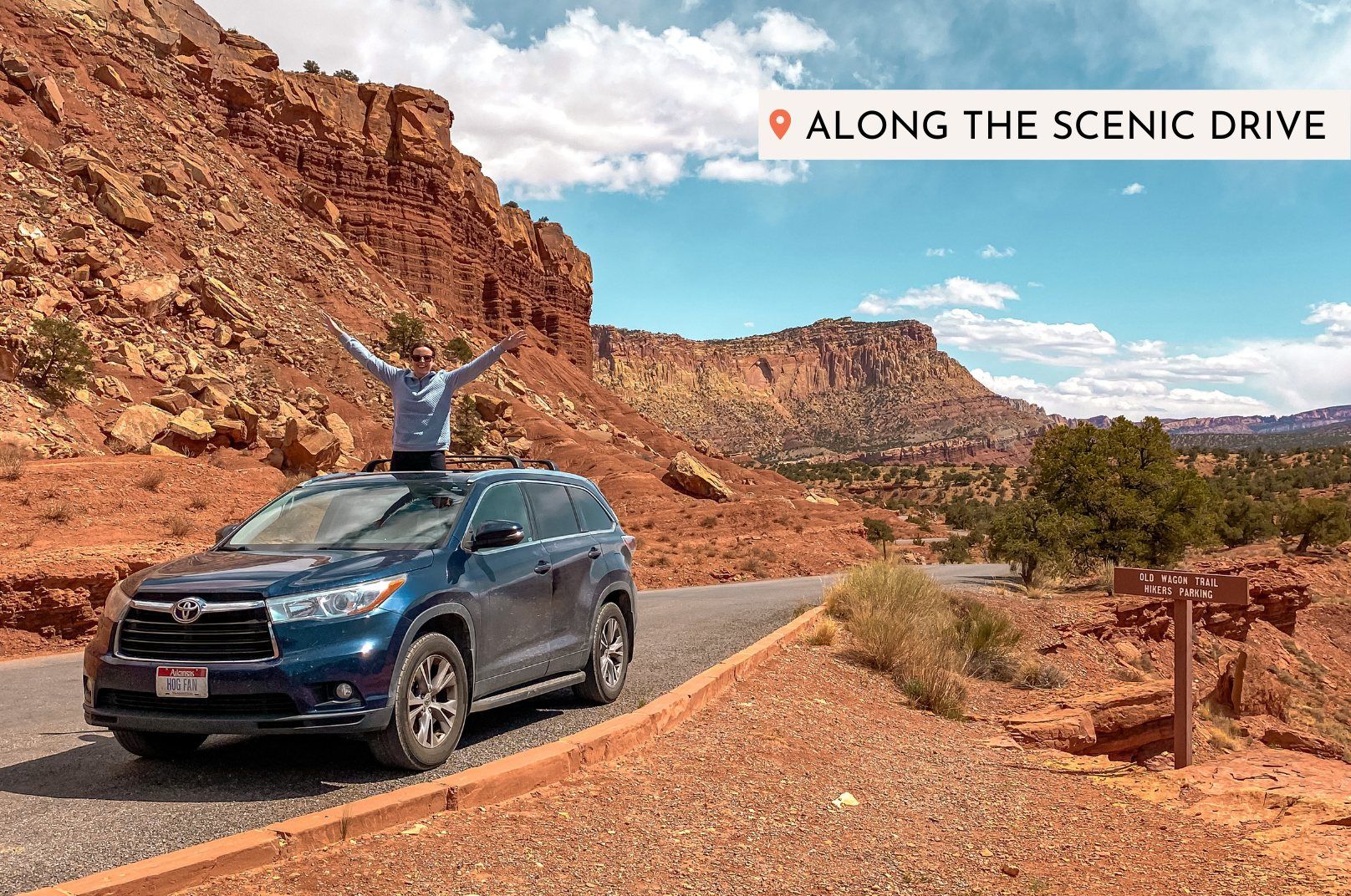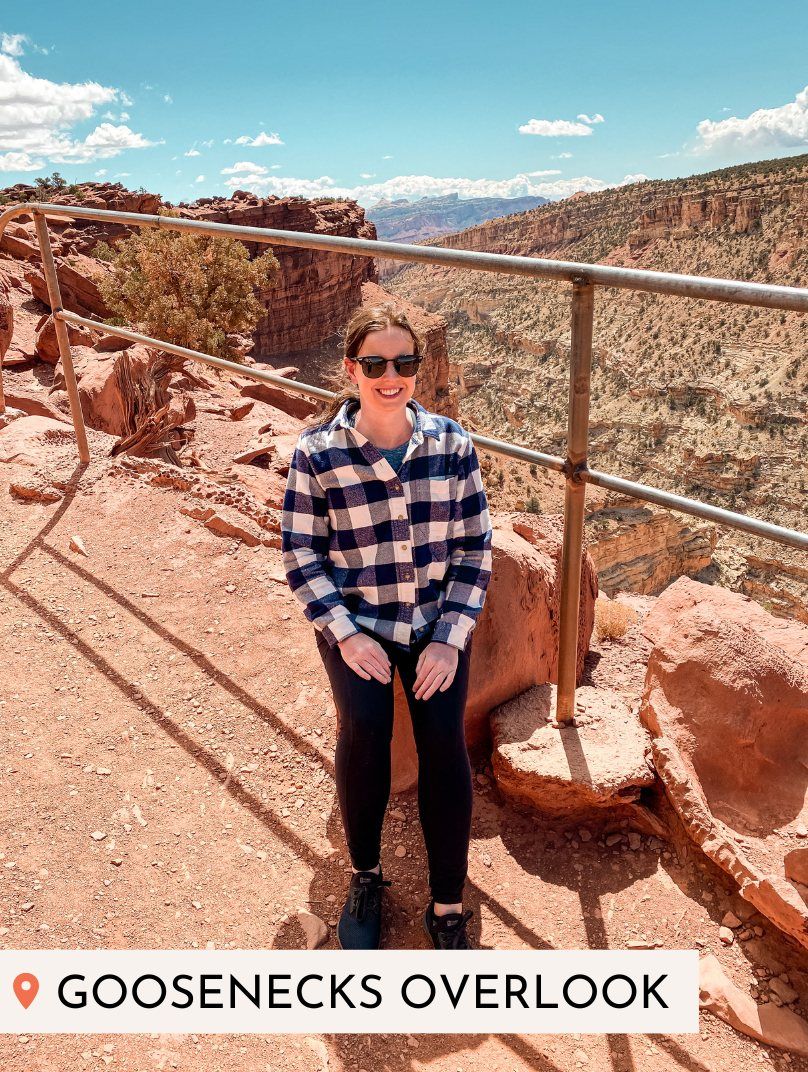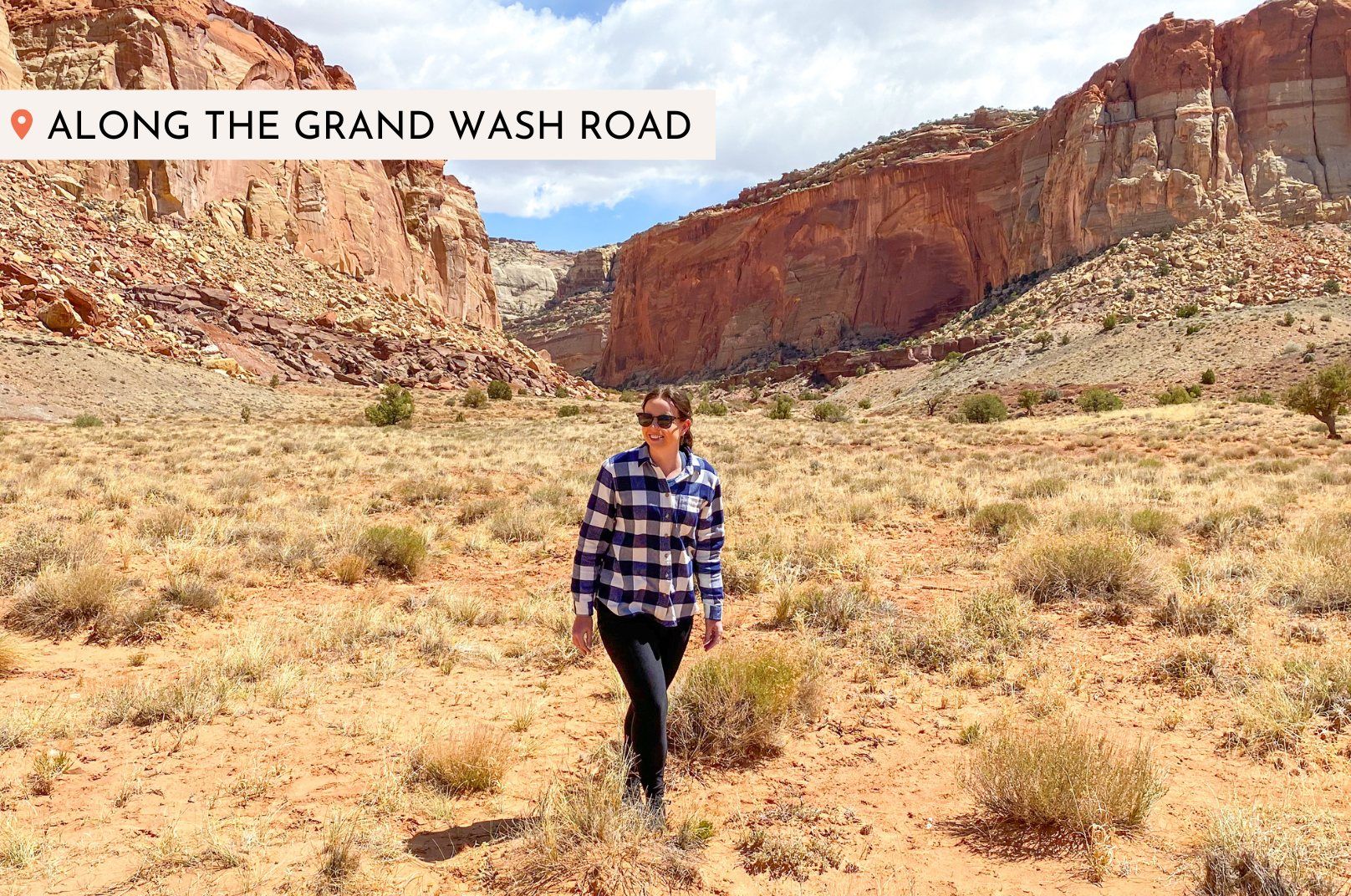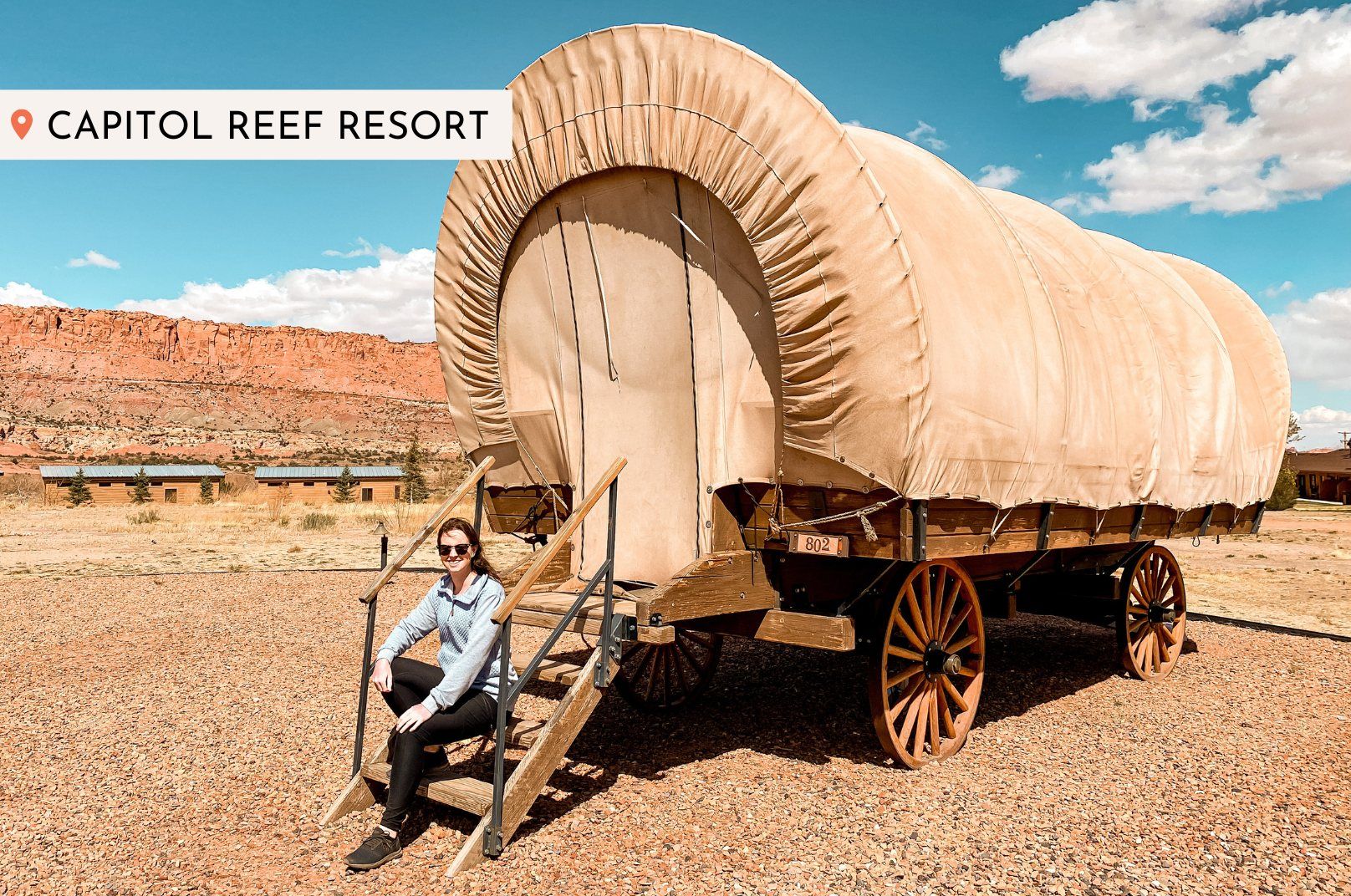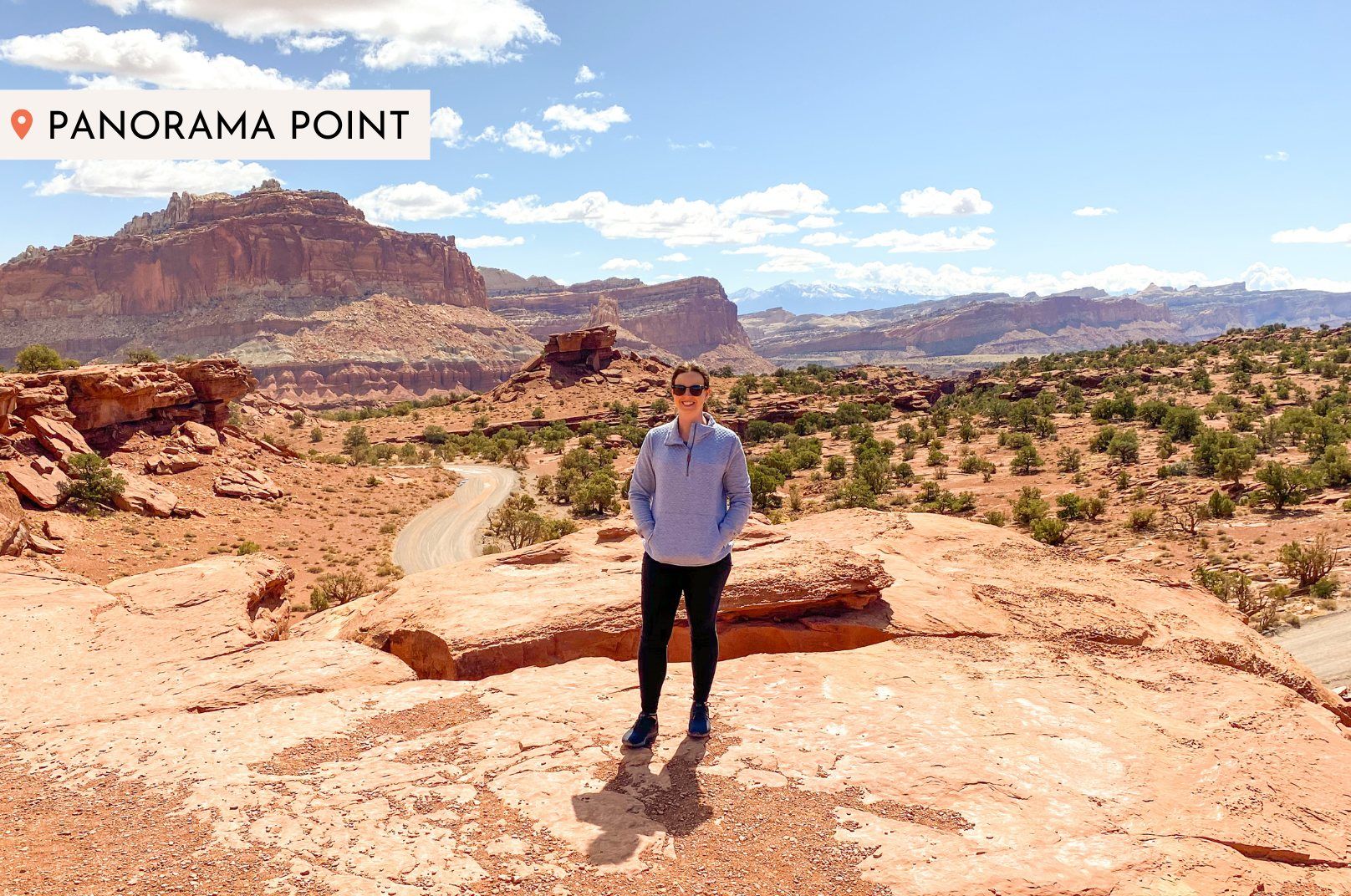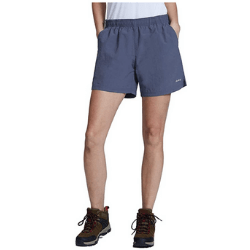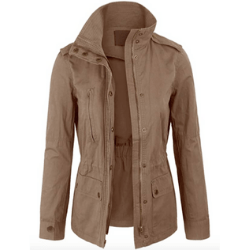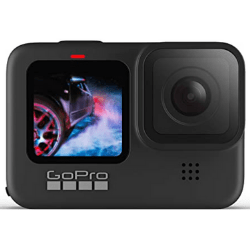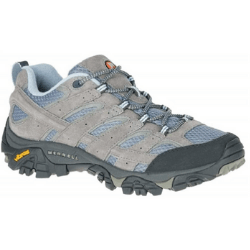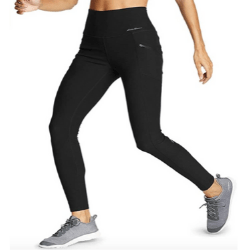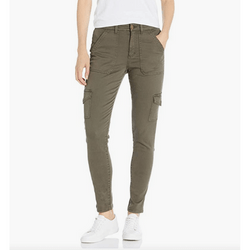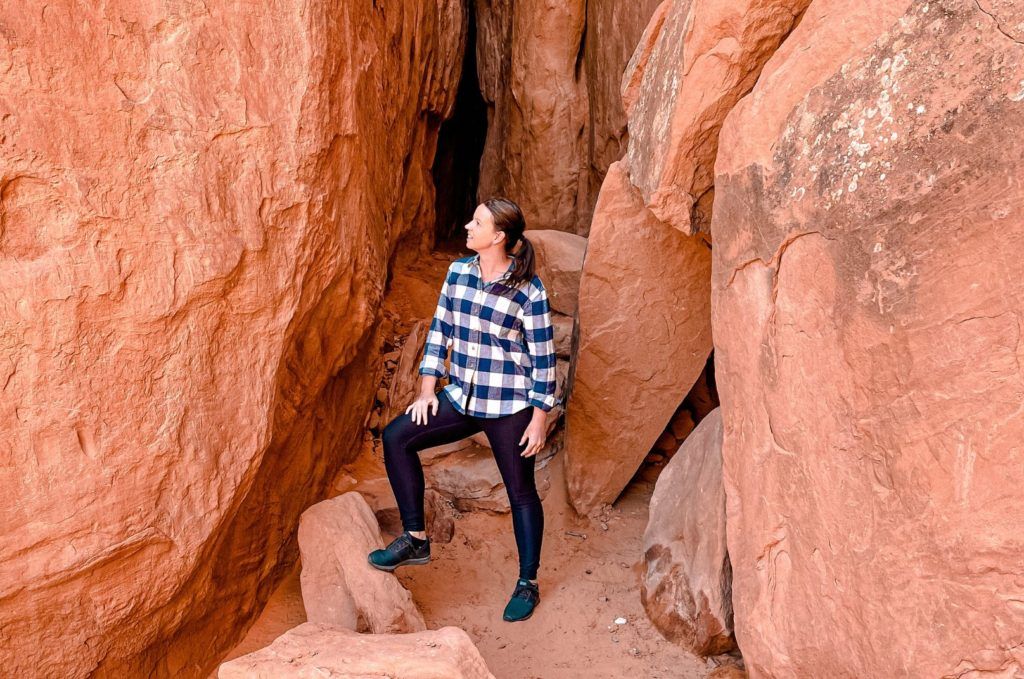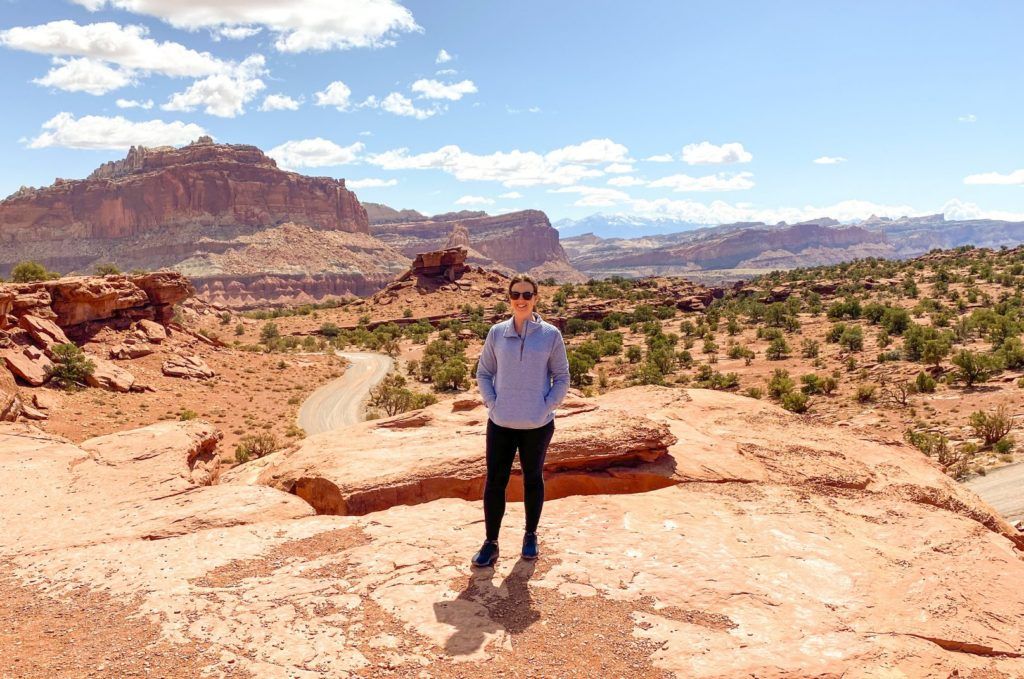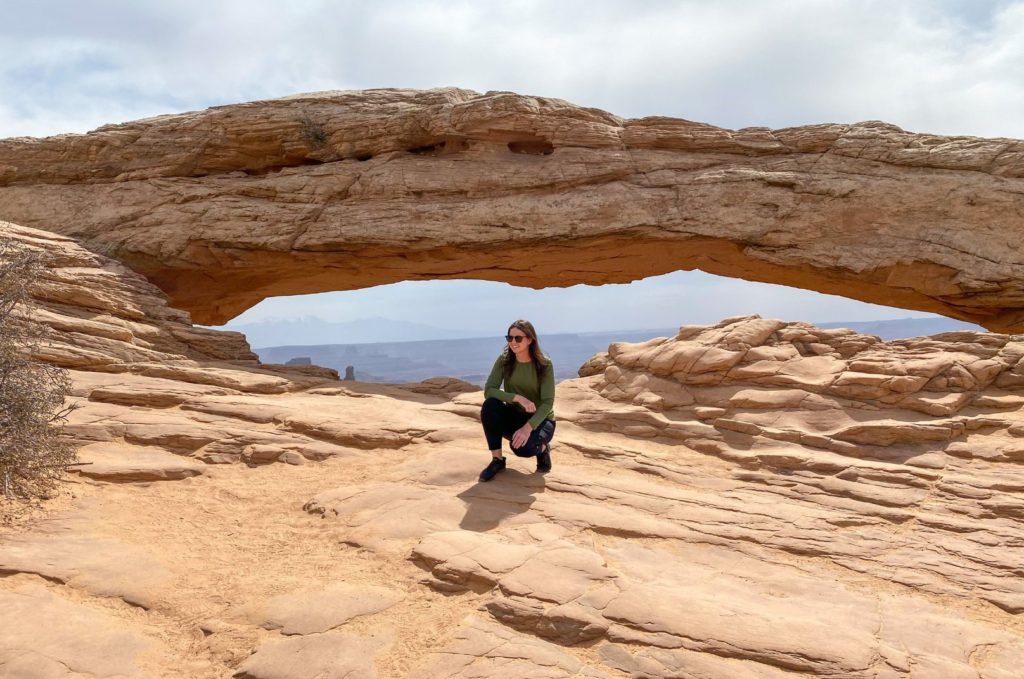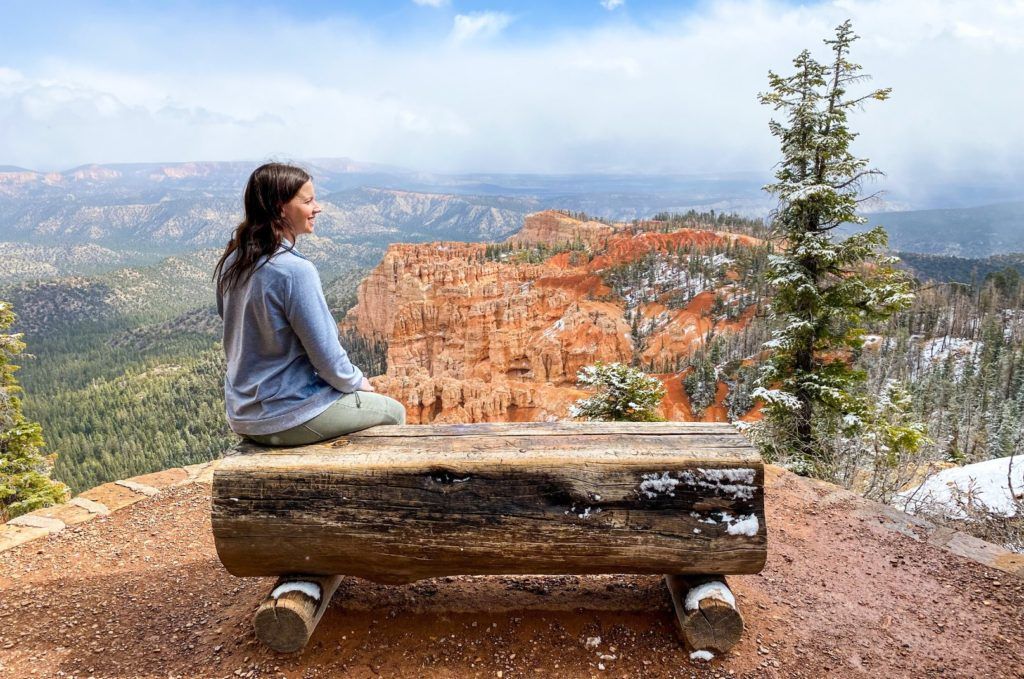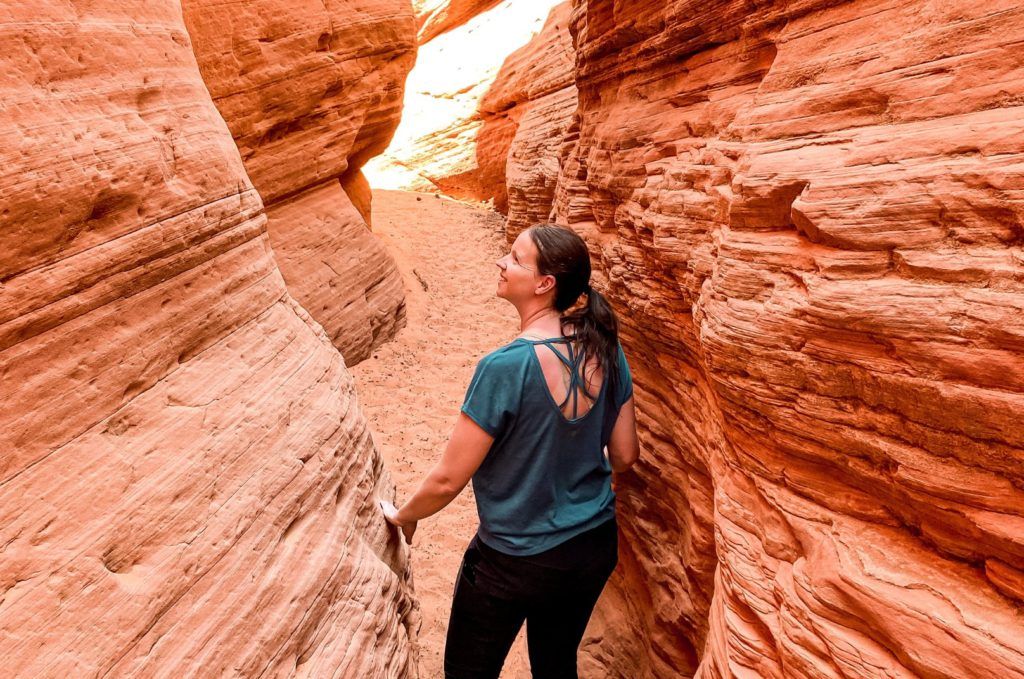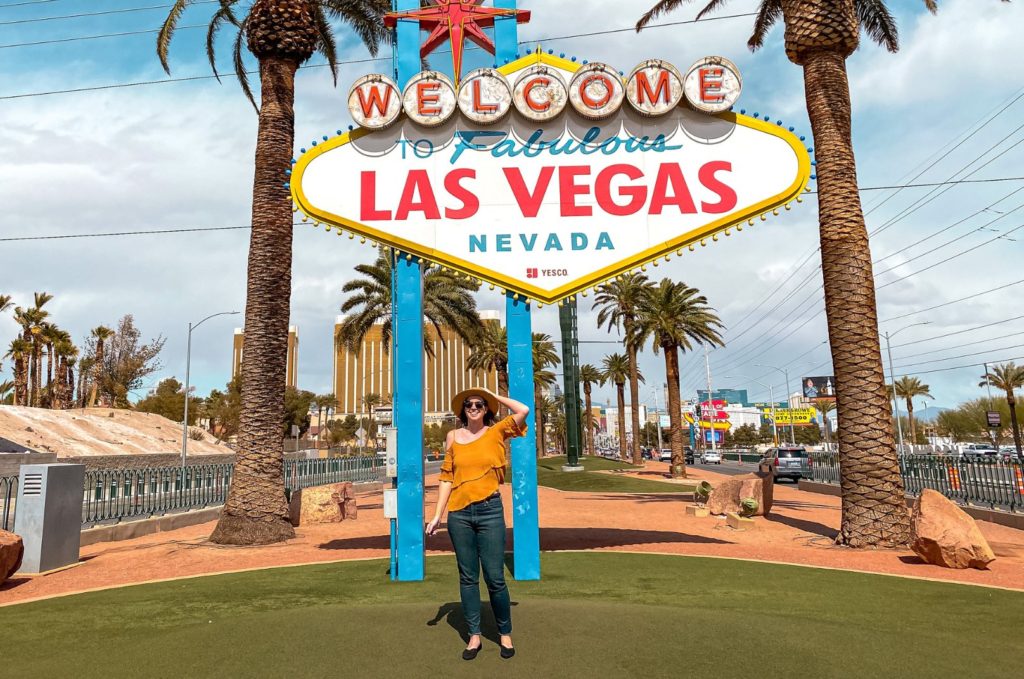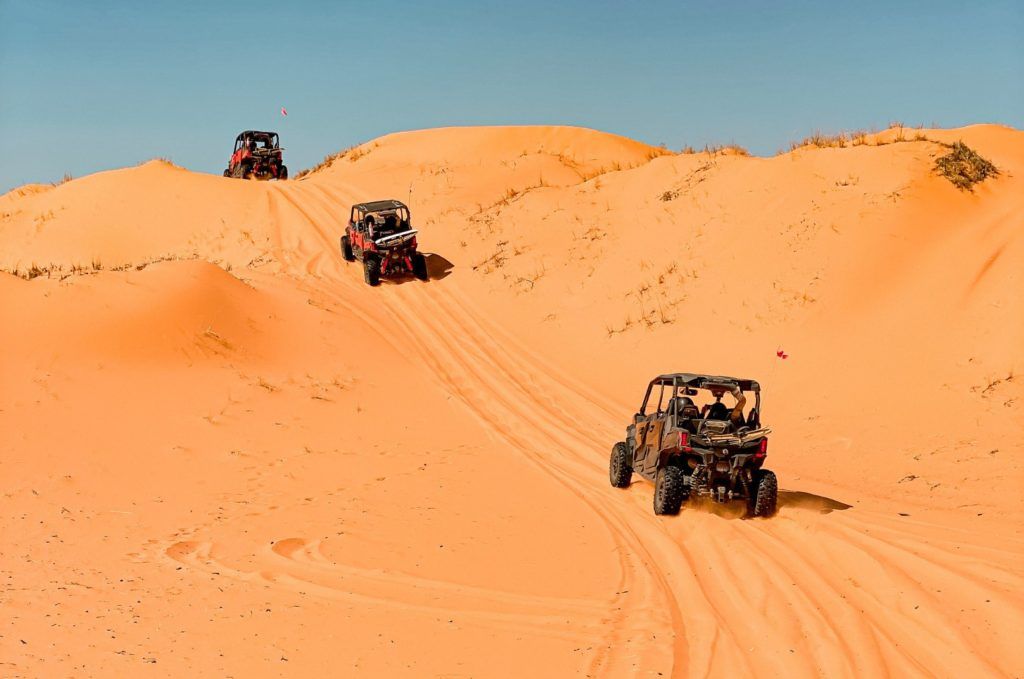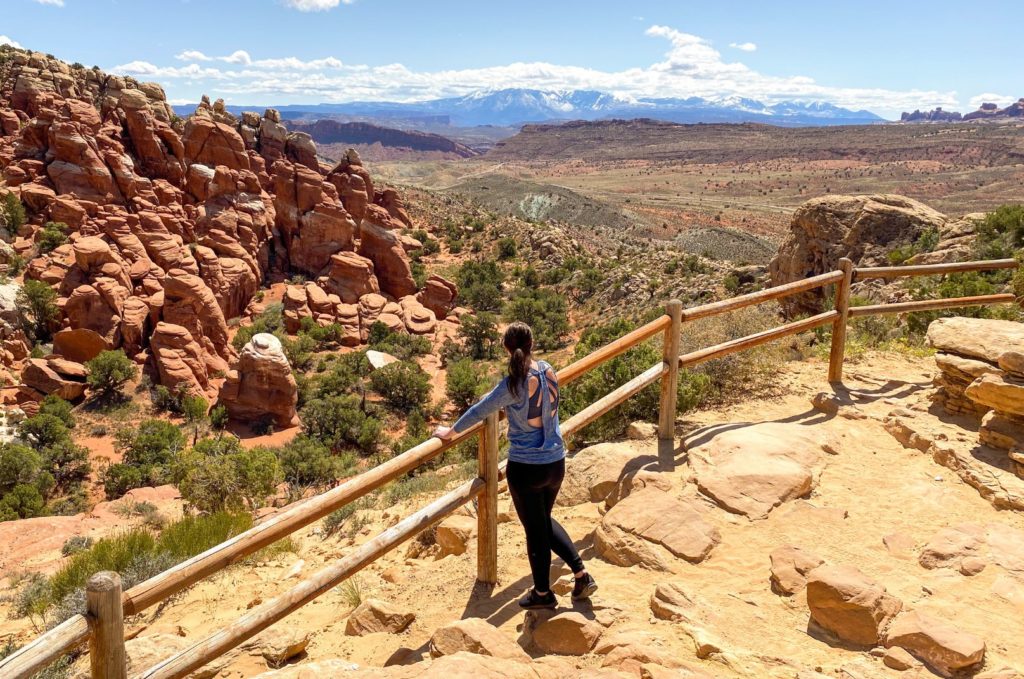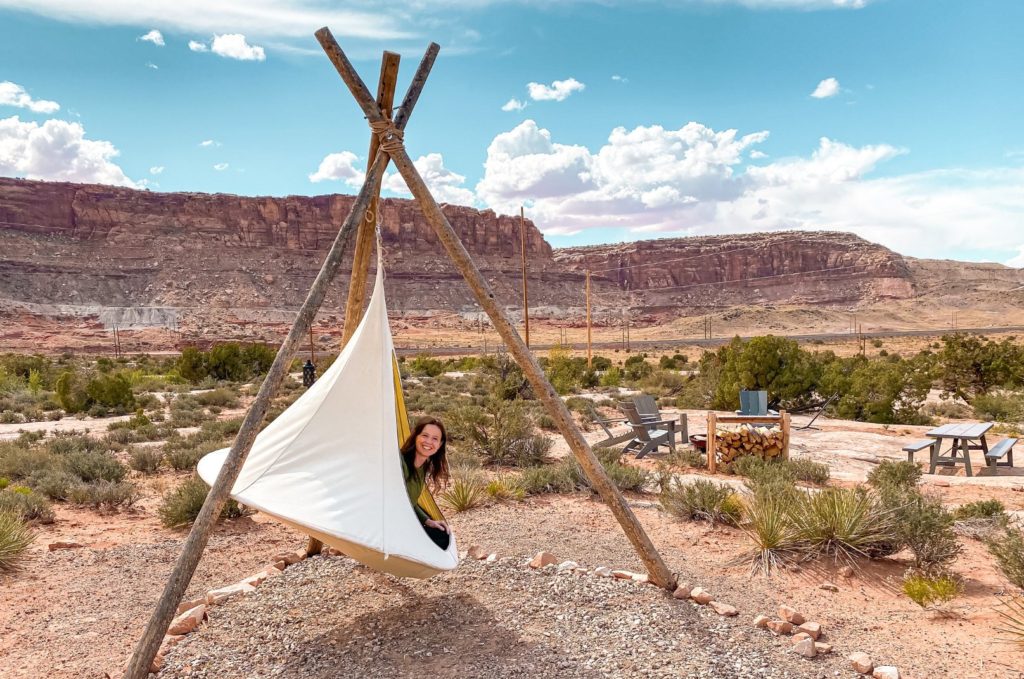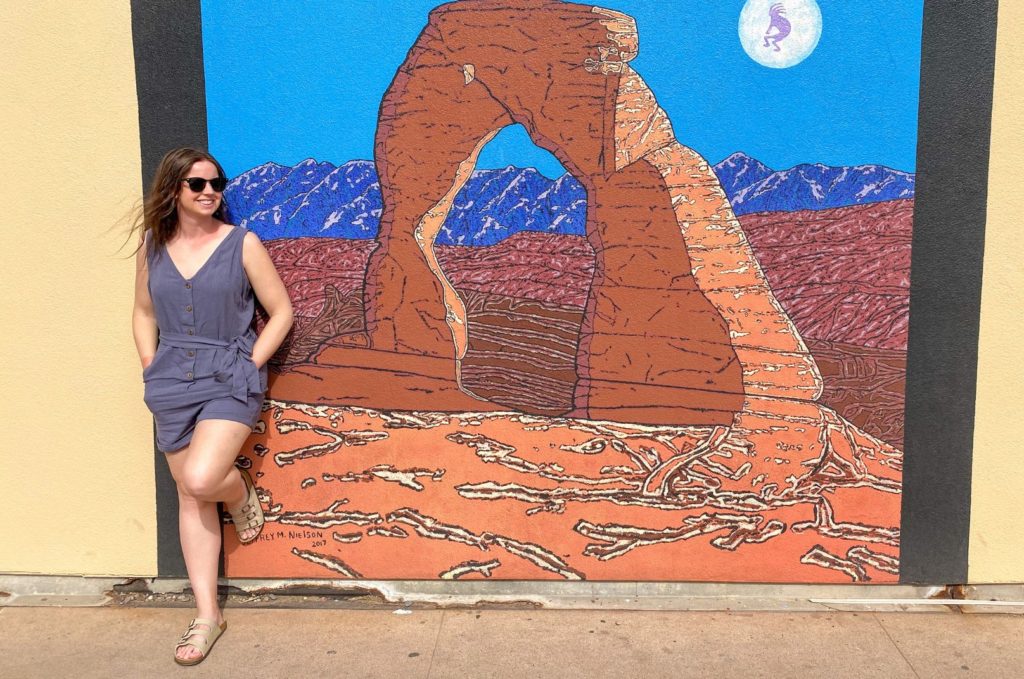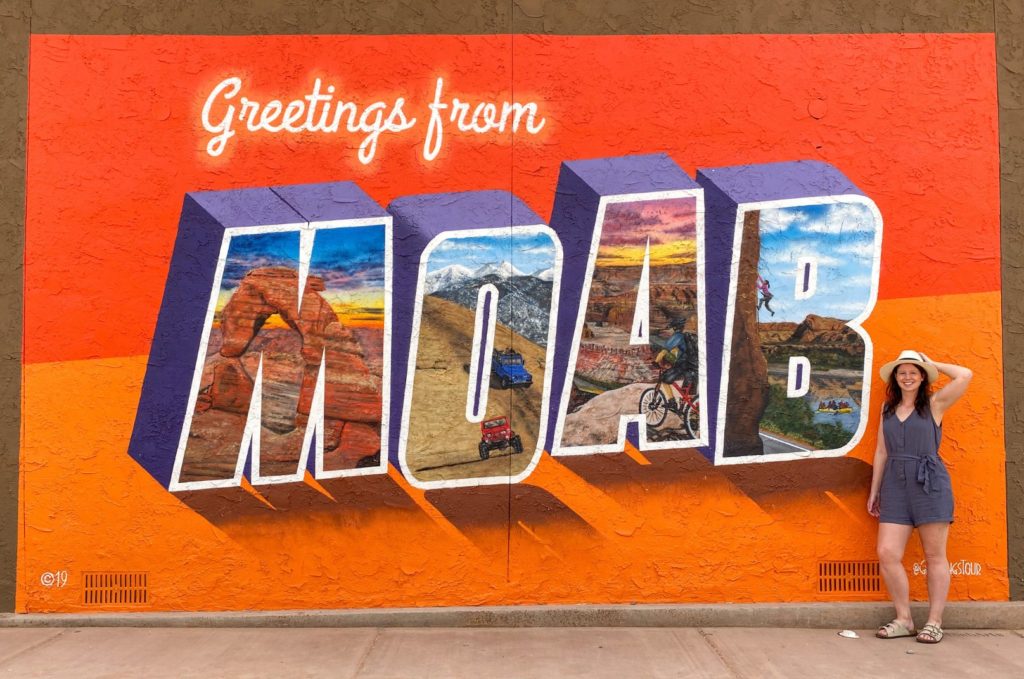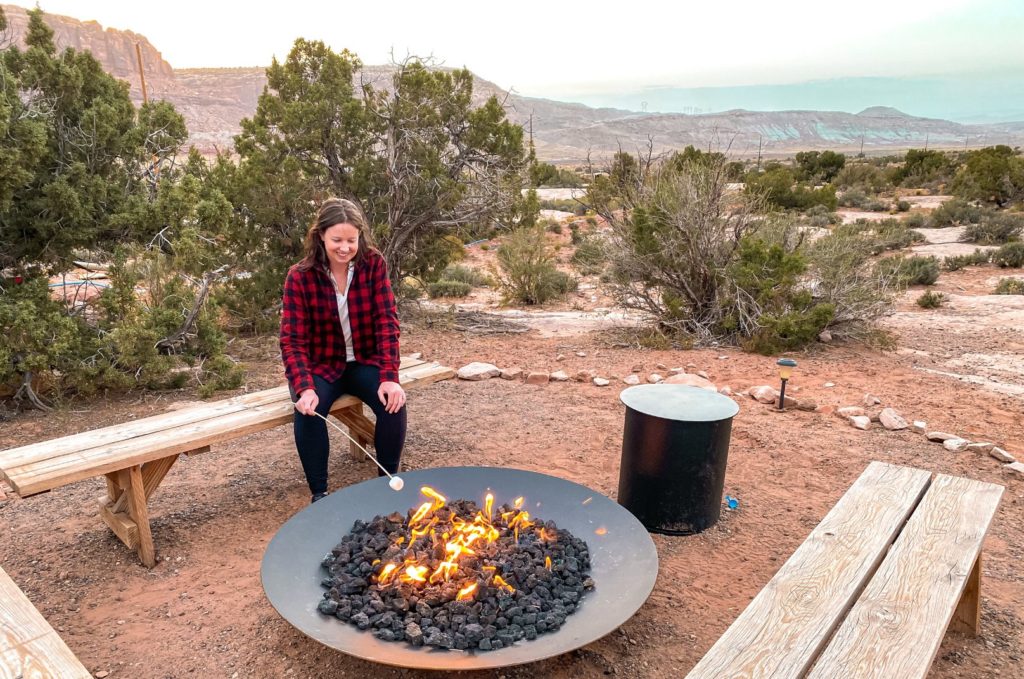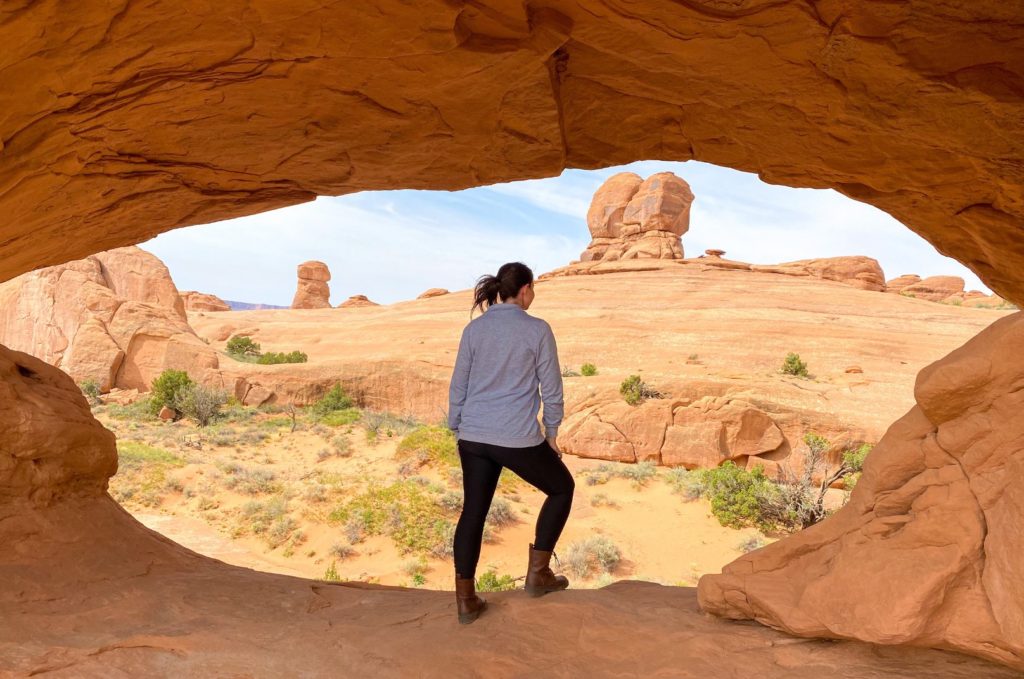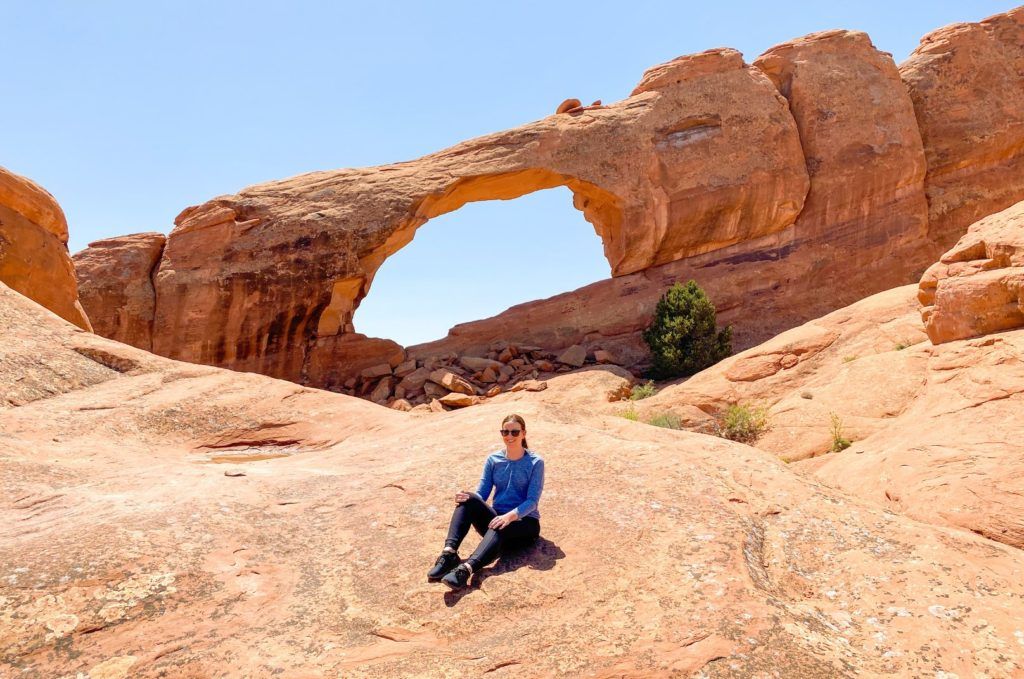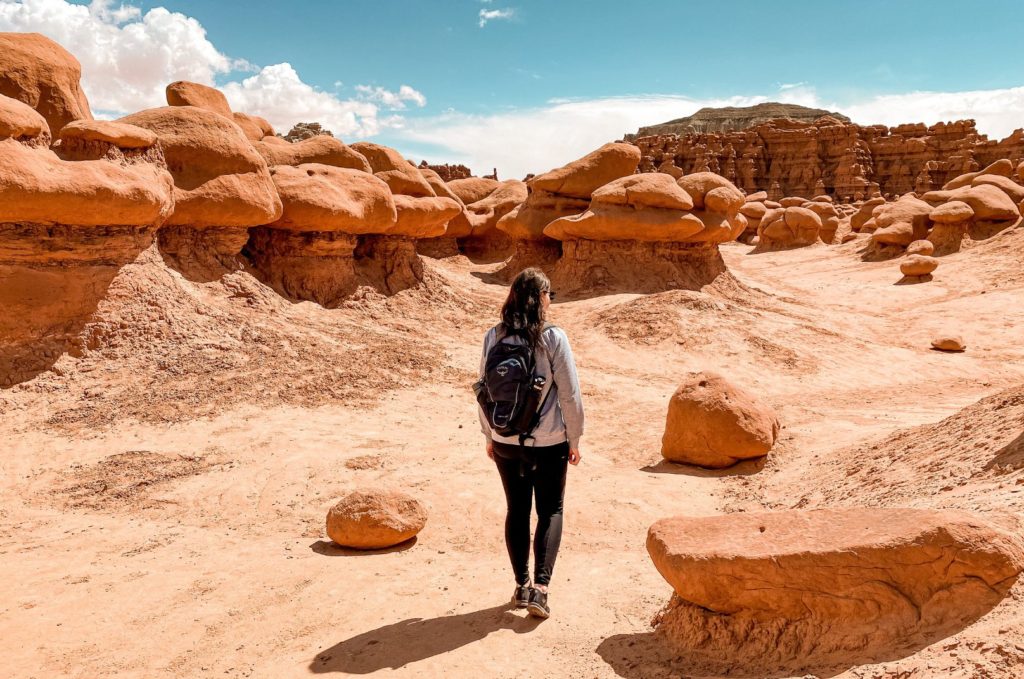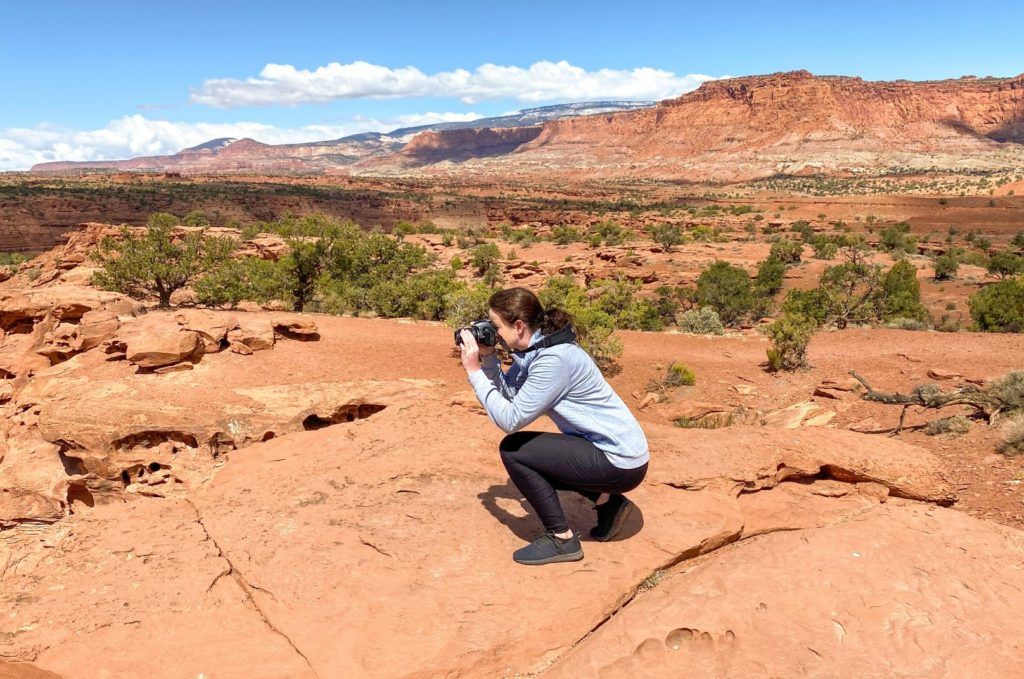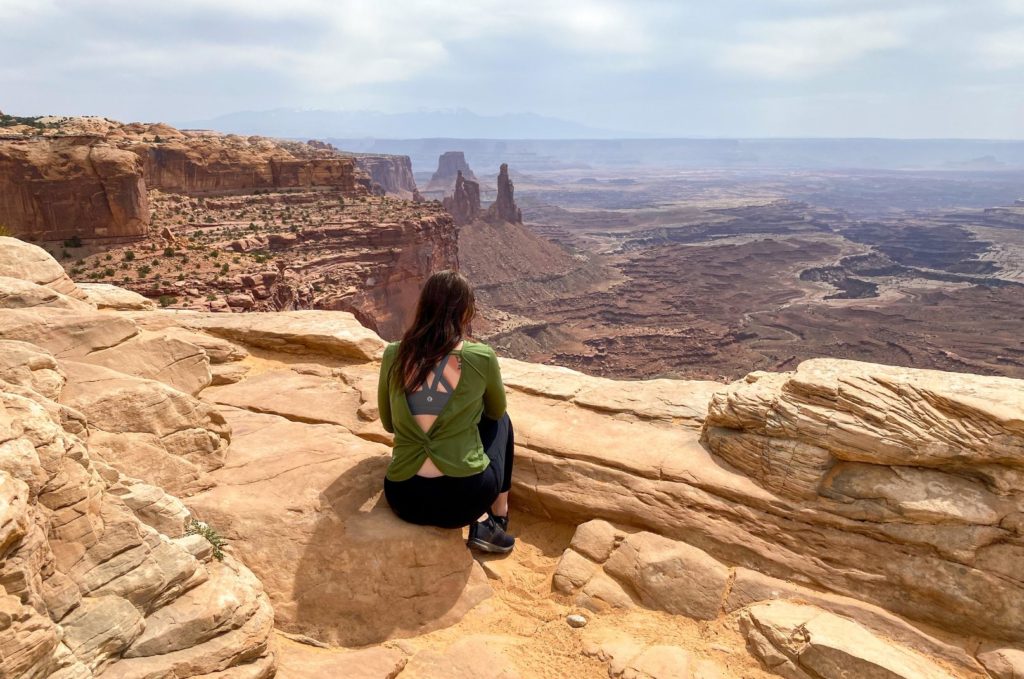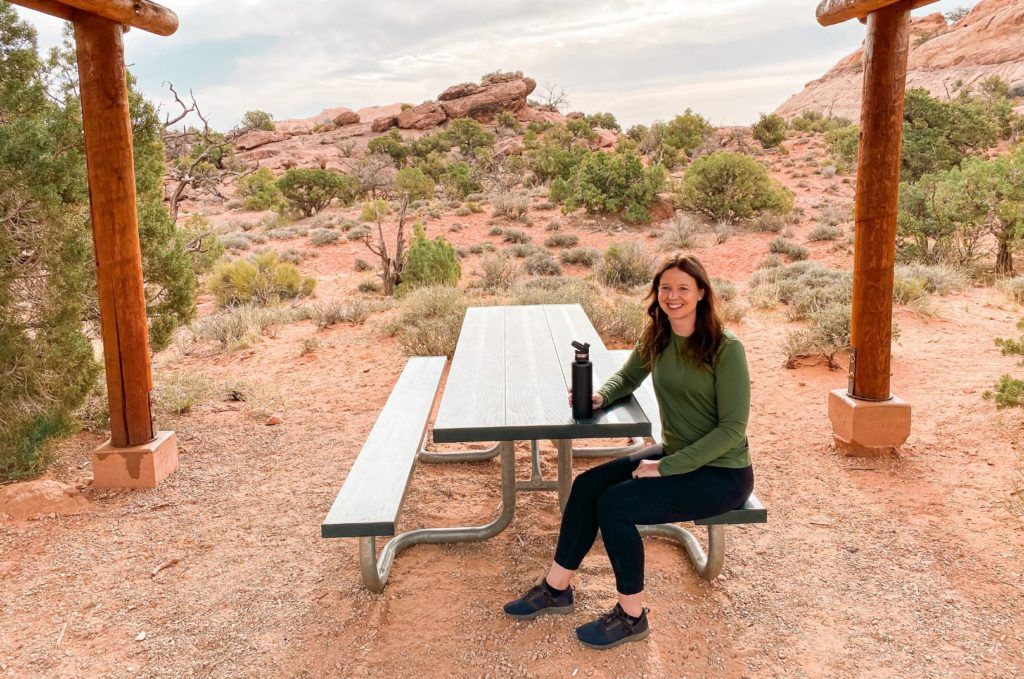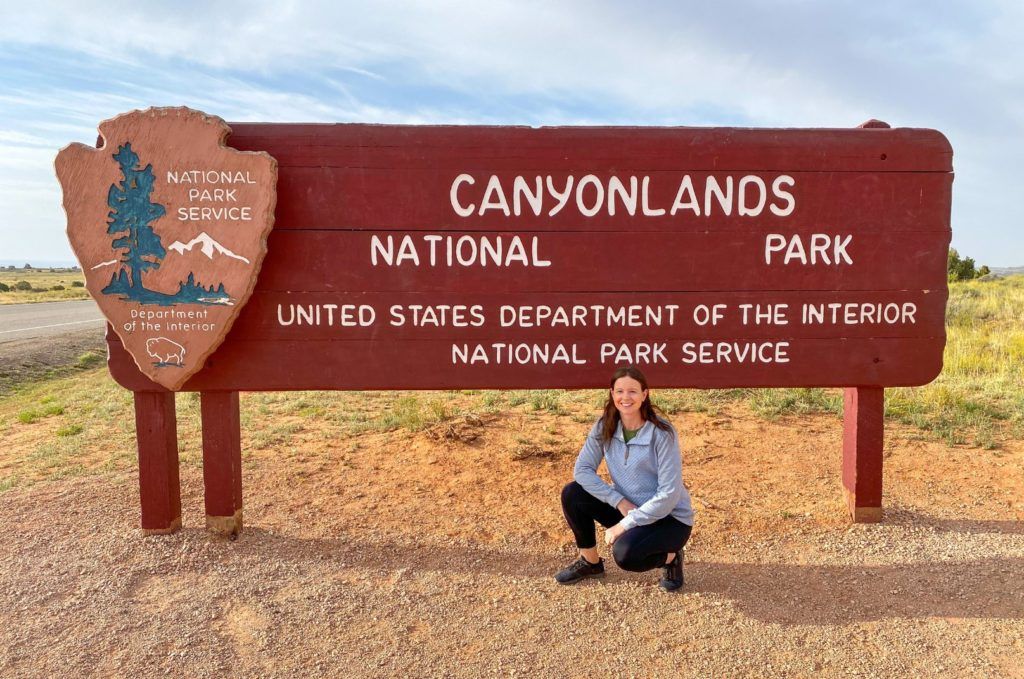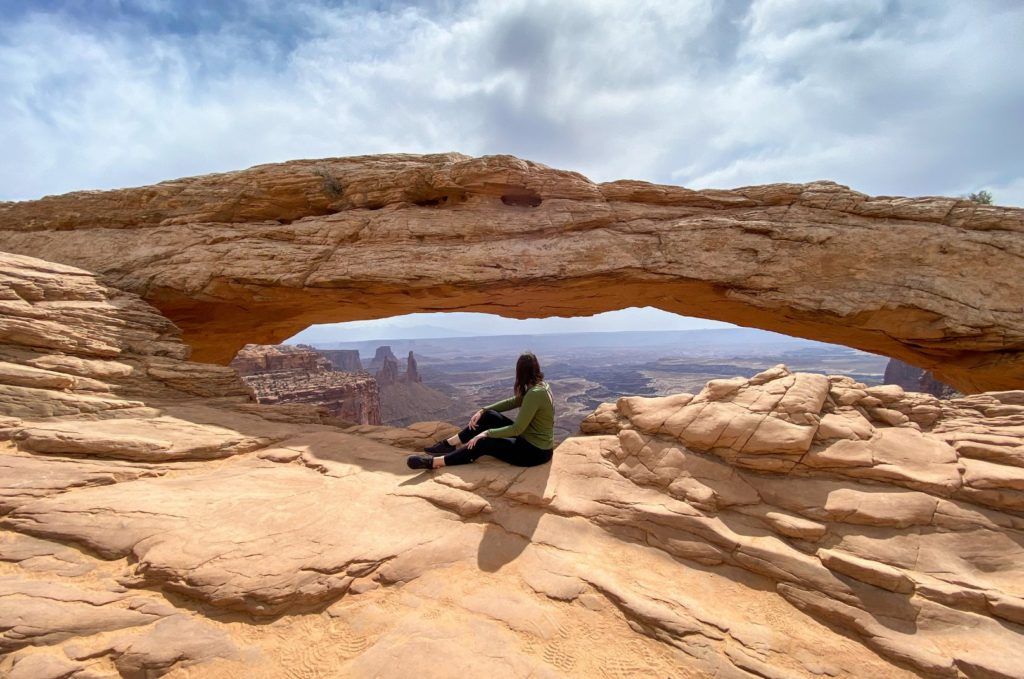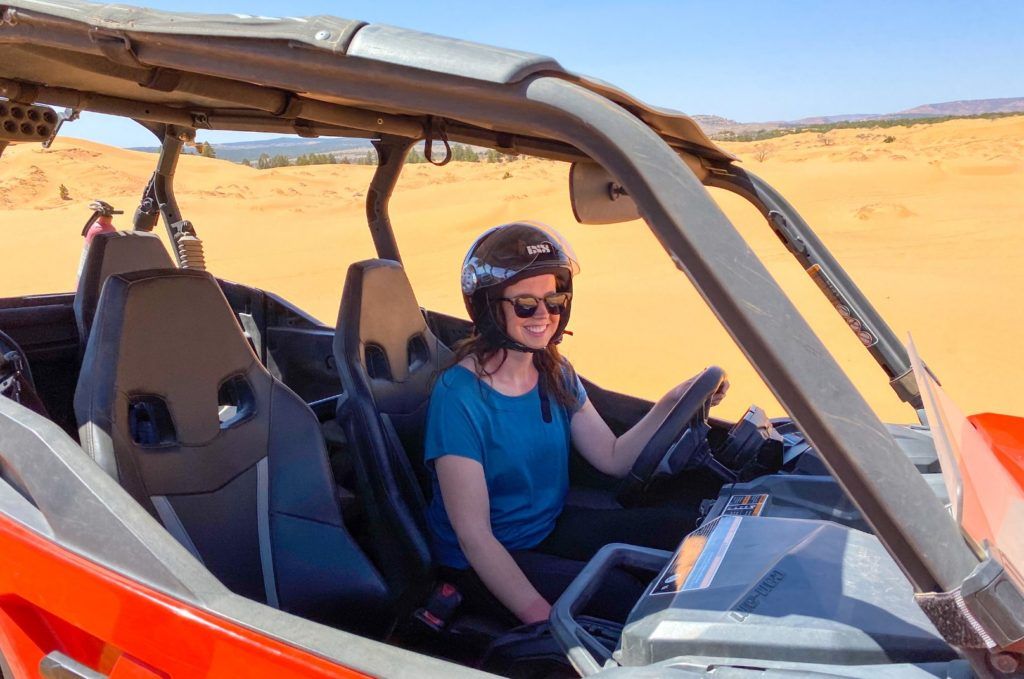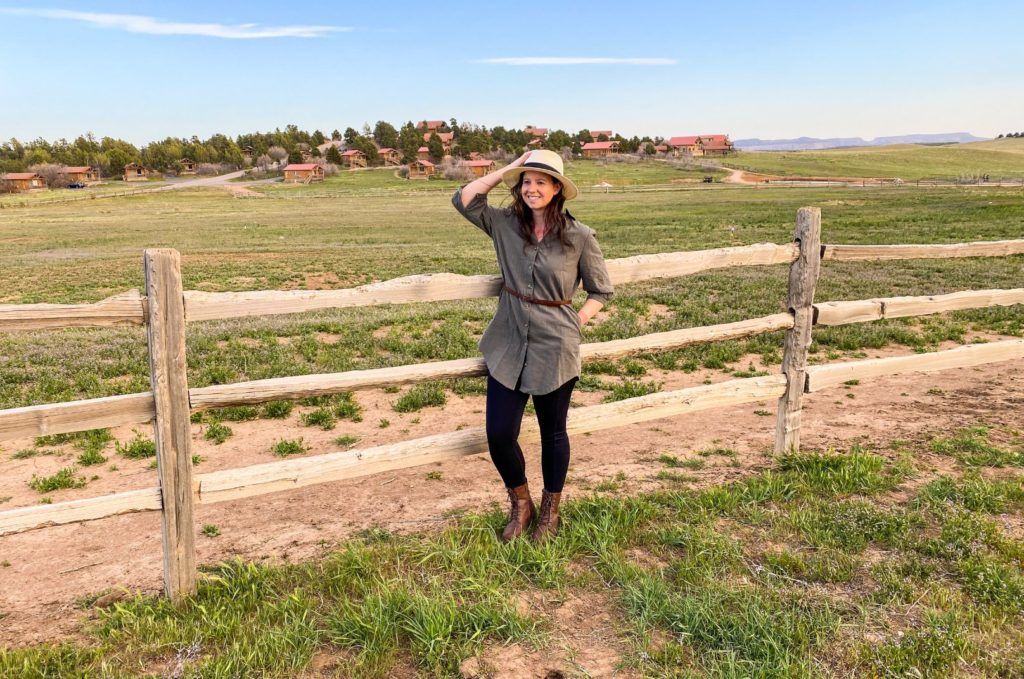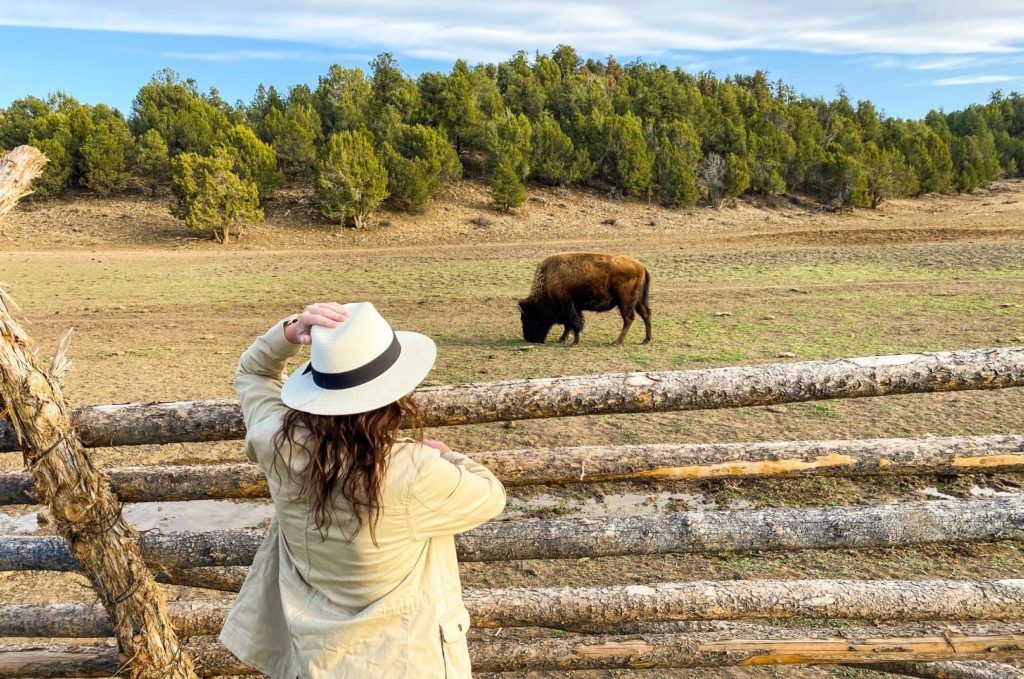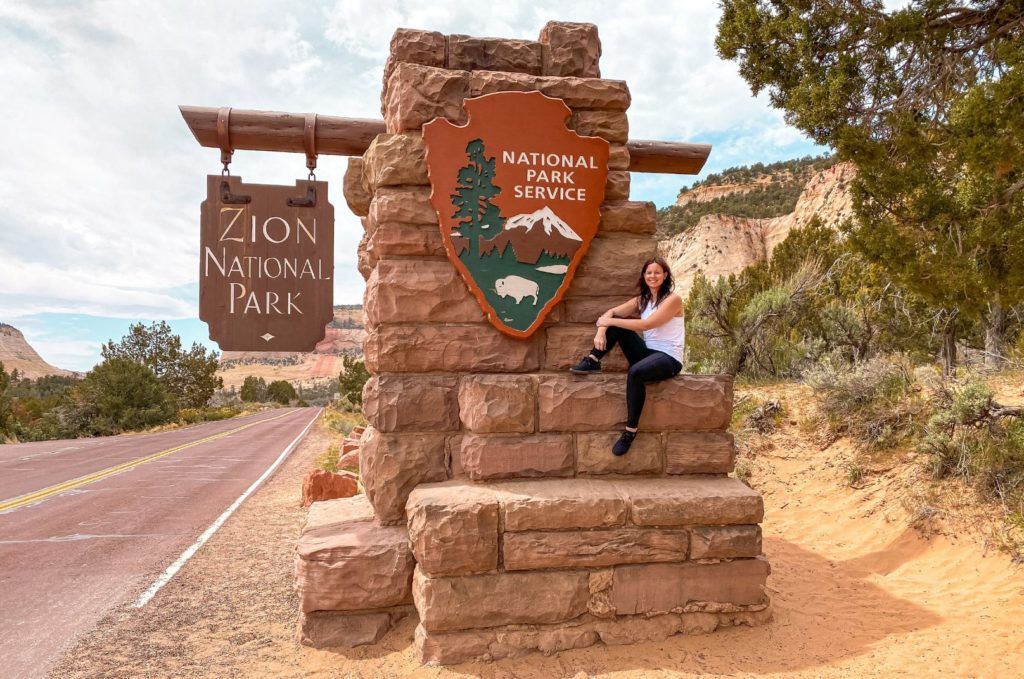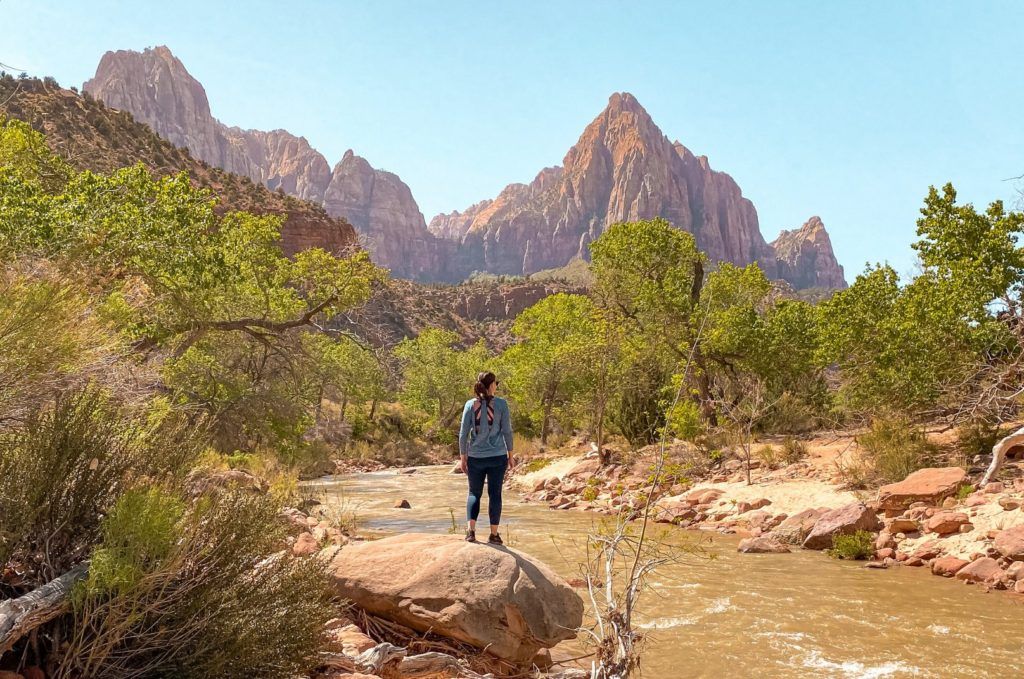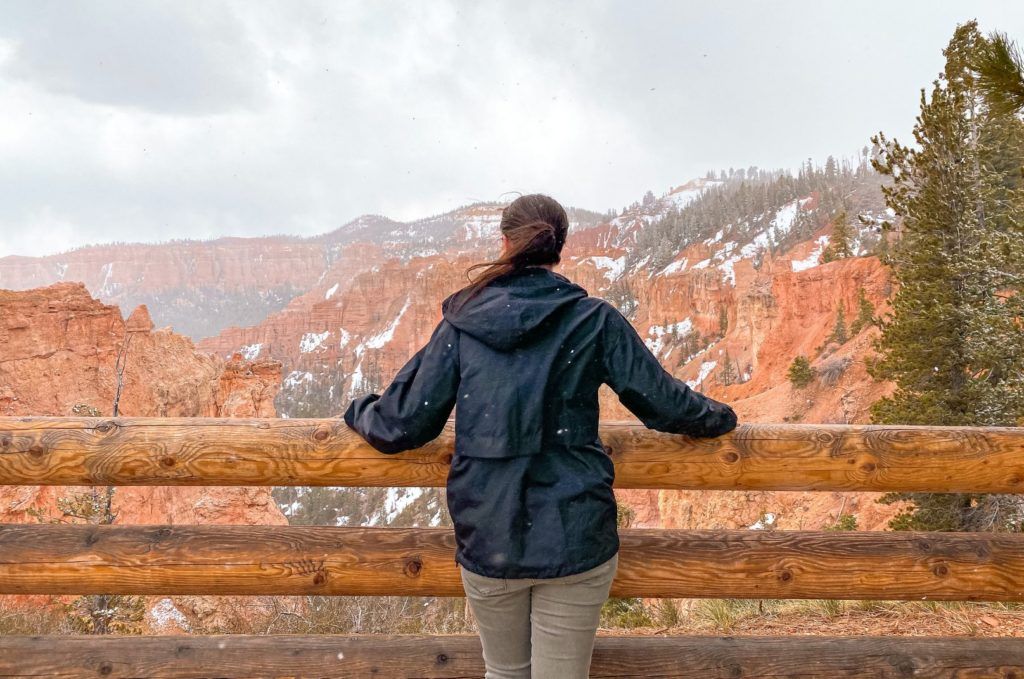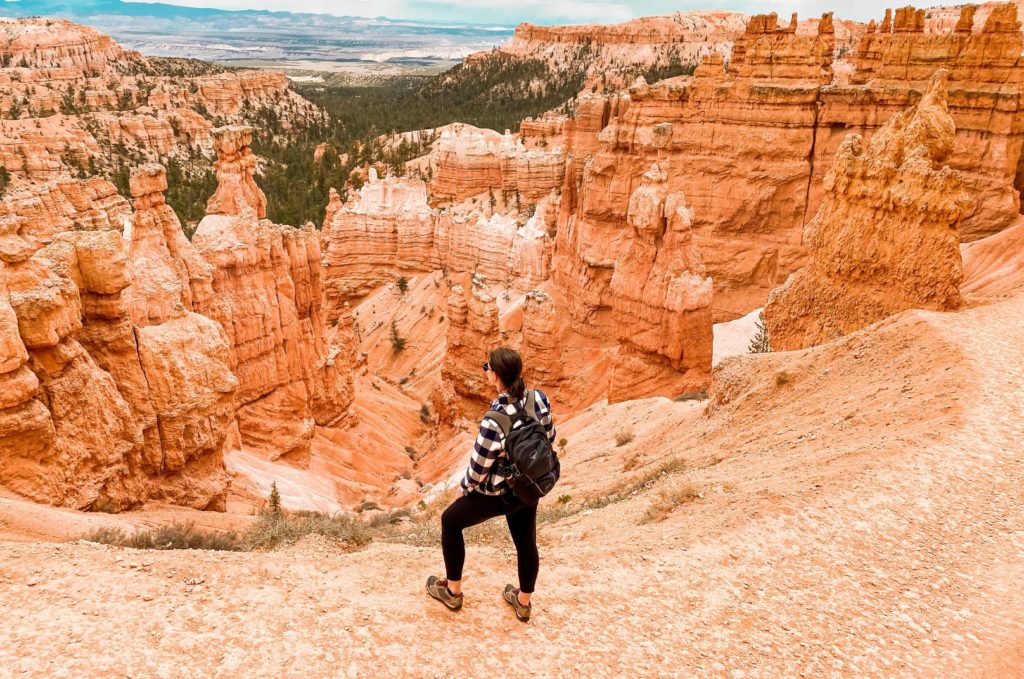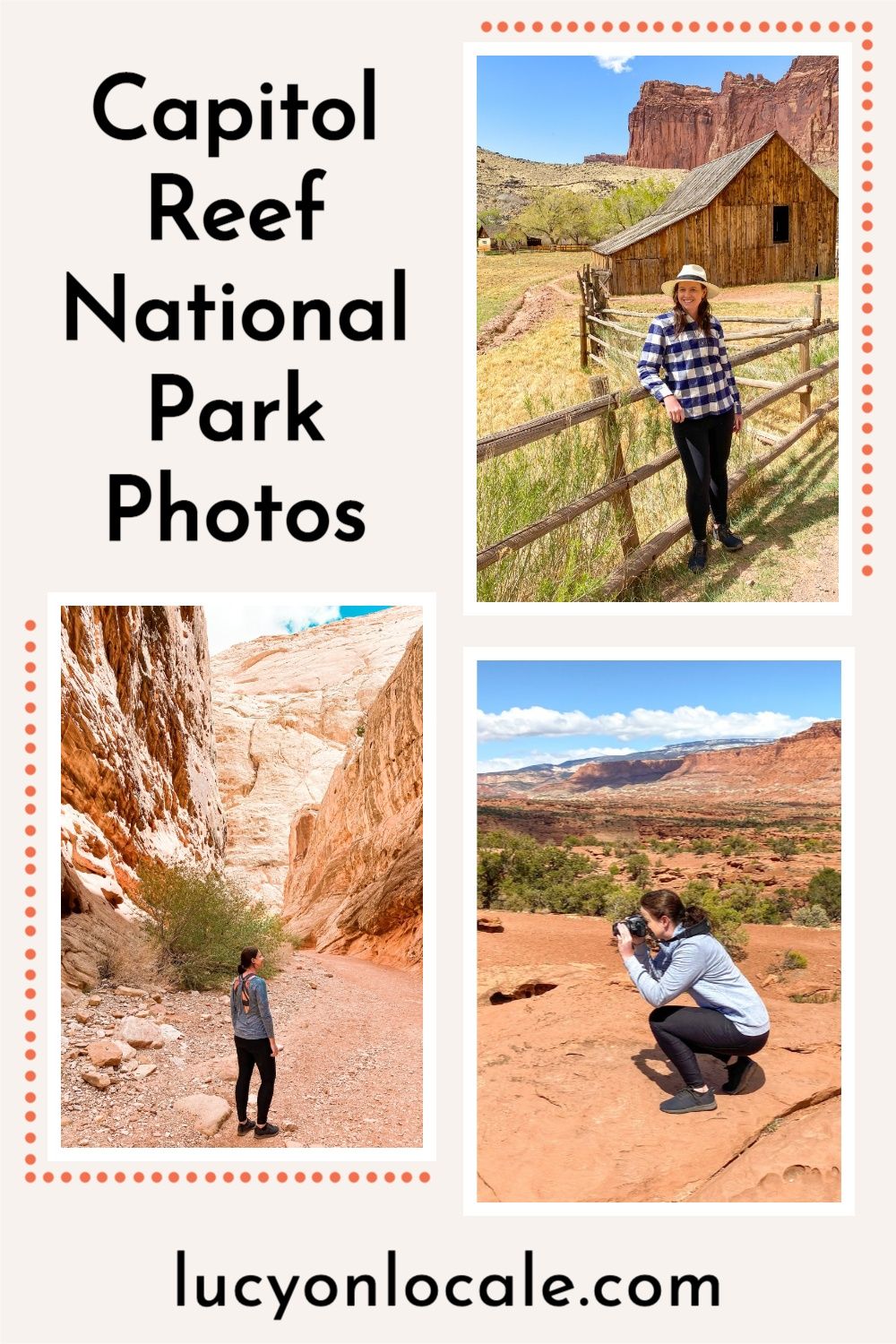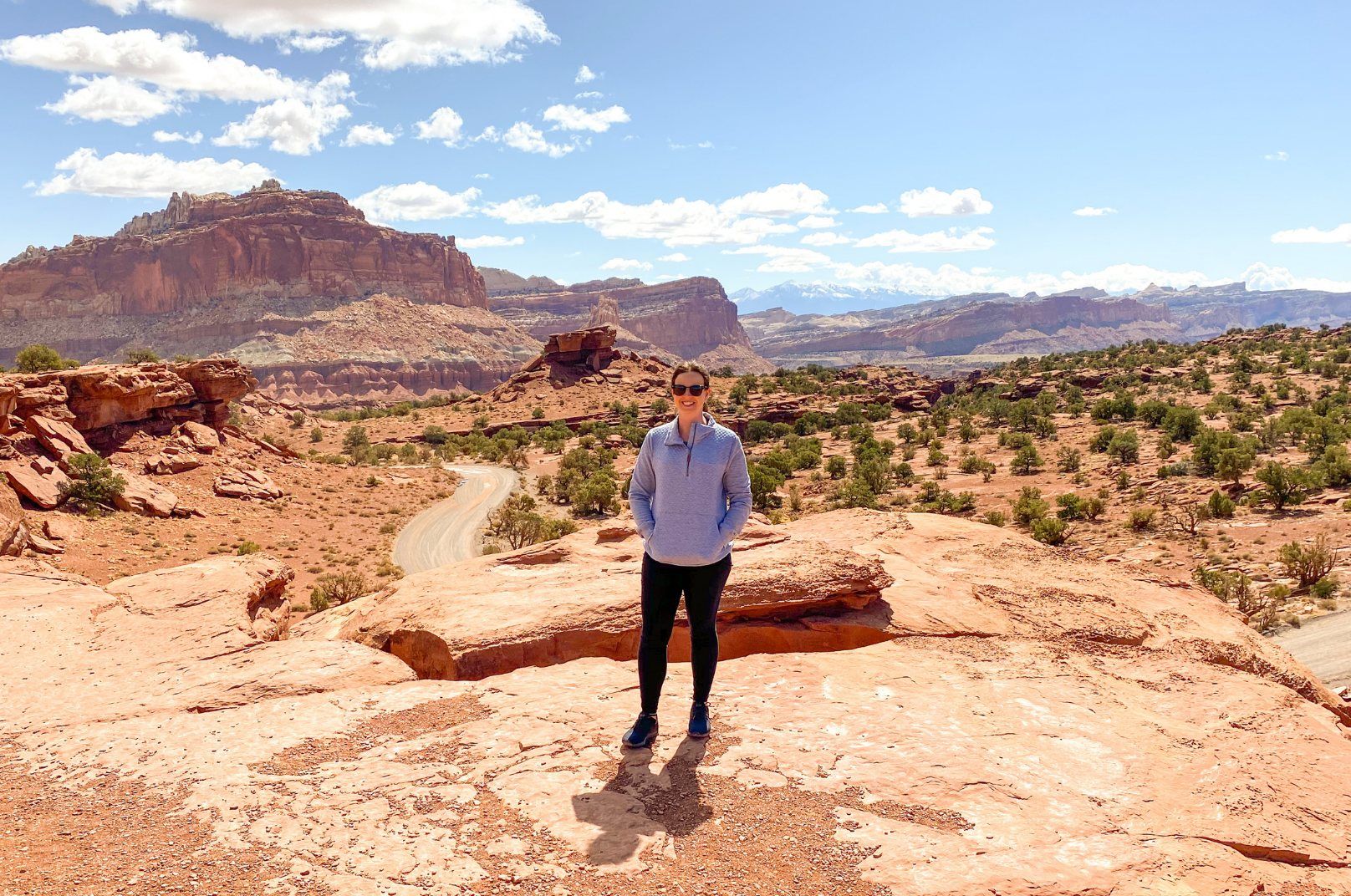
Capitol Reef is the perfect mid-way point on a Utah “Mighty Five” road trip. So here are some of my favorite Capitol Reef National Park photos to inspire your travel plans!
The Ultimate Capitol Reef National Park Guide
There are many incredible hotels, vacation homes, and glamping sites near Capitol Reef for every budget and preference. If you’re bringing an RV or motorhome, opt for the Wonderland RV Park or Sandcreek RV Park.
My top recommendations for Capitol Reef are to drive the scenic Highway 24 from one end of the park to the other (the best stops are Panorama Point, Sunset Point Trail, Goosenecks Overlook, and the pull-out in front of The Castle), explore the Fruita Historic District, have a picnic lunch by the Fremont River, pick fruit from the orchards, and hike the Rim Overlook trail.
Here are my best Capitol Reef National Park photos to inspire your next trip!

Read More
Arches, Canyonlands, Zion, and Bryce Canyon National Park Guides

Shop My National Park Essentials

Did my Capitol Reef National Park photos inspire you to visit? Let us know in the comments!

Plan The Rest Of Your Trip

Recommended Tours in Capitol Reef

Frequently Asked Questions
What should I not miss at Capitol Reef?
If you’re only visiting Capitol Reef for a day, arrive as early as possible. This will be your itinerary if you’re coming from Torrey, Bryce Canyon, or Zion. If you’re coming from Arches, Moab, or Canyonlands, you’ll want to do this itinerary in reverse:
Start your day with the scenic drive on Highway 24 until you reach the visitor center. The best stops on this portion of 24 are Panorama Point, Sunset Point Trail, Goosenecks Overlook, and the pull-out in front of The Castle.
After you stop at the visitor center, drive on the scenic drive through the park, making sure to stop at as many pull-offs as possible. When you get back to the Fruita Historic District, have a picnic lunch by the Fremont River, explore the historic buildings, and check out the fruit orchards.
Then head back to Highway 24, going west until you get to the Hickman Bridge/Rim Overlook trailhead. If you want a moderate hike, opt for Hickman Bridge (1.8 miles out and back, 400 ft elevation gain, 1.5-2 hours), which takes you to a natural bridge with beautiful canyon views. If you’re up for a strenuous hike for incredible views of most of the park, choose the Rim Overlook trail (4.6 miles out and back, 1600 ft elevation gain, 2.5-3 hours).
Finish your day by driving the rest of scenic Highway 24 to the western side of the park, then head back to Torrey for the night, or head on to Moab, Arches, or Canyonlands.
If you have a second day to spend in Capitol Reef, rent a 4×4 vehicle (if you don’t already have one) and explore the Cathedral Valley northern part of the park. The Cathedral Valley section of the park has an unpaved loop road that will let you experience some of the most breathtaking and unique landscapes you’ll ever see.
You’ll want to pack out a lunch, have a full tank of gas, and make sure you stop at the Temple of the Sun and Moon and the Upper Cathedral Valley Overlook.
How much time do you need in Capitol Reef National Park?
1-2 days.
If you’re only visiting Capitol Reef for a day, arrive as early as possible. This will be your itinerary if you’re coming from Torrey, Bryce Canyon, or Zion. If you’re coming from Arches, Moab, or Canyonlands, you’ll want to do this itinerary in reverse:
Start your day with the scenic drive on Highway 24 until you reach the visitor center. The best stops on this portion of 24 are Panorama Point, Sunset Point Trail, Goosenecks Overlook, and the pull-out in front of The Castle.
After you stop at the visitor center, drive on the scenic drive through the park, making sure to stop at as many pull-offs as possible. When you get back to the Fruita Historic District, have a picnic lunch by the Fremont River, explore the historic buildings, and check out the fruit orchards.
Then head back to Highway 24, going west until you get to the Hickman Bridge/Rim Overlook trailhead. If you want a moderate hike, opt for Hickman Bridge (1.8 miles out and back, 400 ft elevation gain, 1.5-2 hours), which takes you to a natural bridge with beautiful canyon views. If you’re up for a strenuous hike for incredible views of most of the park, choose the Rim Overlook trail (4.6 miles out and back, 1600 ft elevation gain, 2.5-3 hours).
Finish your day by driving the rest of scenic Highway 24 to the western side of the park, then head back to Torrey for the night, or head on to Moab, Arches, or Canyonlands.
If you have a second day to spend in Capitol Reef, rent a 4×4 vehicle (if you don’t already have one) and explore the Cathedral Valley northern part of the park. The Cathedral Valley section of the park has an unpaved loop road that will let you experience some of the most breathtaking and unique landscapes you’ll ever see.
You’ll want to pack out a lunch, have a full tank of gas, and make sure you stop at the Temple of the Sun and Moon and the Upper Cathedral Valley Overlook.
Which is better Capitol Reef or Canyonlands?
Canyonlands and Capitol Reef are both incredible destinations, and they will give you very different scenery and experiences. I highly recommend visiting both of these national parks!
Is Capitol Reef worth visiting?
Yes! Capitol Reef is more off-the-beaten-path than Utah’s other “Mighty Five” national parks, so this is an incredible park for escaping the crowds. The hiking, scenic drives, and landscapes are stunning and well-worth a visit.
How crowded is Capitol Reef?
Capitol Reef is less crowded than Zion, Bryce Canyon, and Arches National Parks, but it’s more popular than Canyonlands National Park.
Know Before You Go:
 Capitol Reef is open year-round, but some trails, facilities, and roads close due to snow and ice in winter and flash flooding in the summer.
Capitol Reef is open year-round, but some trails, facilities, and roads close due to snow and ice in winter and flash flooding in the summer. You can pick apples, peaches, cherries, pears, plums, apricots, and almonds from the park’s orchards for free, and there’s a small fee to bring fruit out of the orchard. Fenced orchards are open from 9:00 am to 5:00 pm, and unfenced orchard hours are open from dawn to dusk. Only pick ripe fruit during harvest season (usually July to October). There will be signs indicating which trees can be picked.
You can pick apples, peaches, cherries, pears, plums, apricots, and almonds from the park’s orchards for free, and there’s a small fee to bring fruit out of the orchard. Fenced orchards are open from 9:00 am to 5:00 pm, and unfenced orchard hours are open from dawn to dusk. Only pick ripe fruit during harvest season (usually July to October). There will be signs indicating which trees can be picked. I highly recommend having a walking stick on every trail. Capitol Reef’s trails can be steep, on cliff edges, and slippery with wet rocks, ice, or loose rocks.
I highly recommend having a walking stick on every trail. Capitol Reef’s trails can be steep, on cliff edges, and slippery with wet rocks, ice, or loose rocks. There is no food in the park, so I recommend packing out your lunch and having snacks with you.
There is no food in the park, so I recommend packing out your lunch and having snacks with you. There is limited cell service inside the park, so download or screenshot maps and trail guides before you arrive. There is WiFi at the visitor center.
There is limited cell service inside the park, so download or screenshot maps and trail guides before you arrive. There is WiFi at the visitor center. Pets are only allowed on public roadways, in campgrounds, and on the trail from the visitor center to the campground, and they must be on a leash no more than six feet long.
Pets are only allowed on public roadways, in campgrounds, and on the trail from the visitor center to the campground, and they must be on a leash no more than six feet long. Capitol Reef is at a high altitude (between 6000 and 9000 feet), so it’s easy to get “winded.” Take lots of breaks, sit down when you can, and always have plenty of water, sun protection, and snacks.
Capitol Reef is at a high altitude (between 6000 and 9000 feet), so it’s easy to get “winded.” Take lots of breaks, sit down when you can, and always have plenty of water, sun protection, and snacks. There is no gas inside the park, so make sure you have a full tank before getting to the park entrance.
There is no gas inside the park, so make sure you have a full tank before getting to the park entrance. In the winter, snowshoes or shoe traction devices are recommended on trails.
In the winter, snowshoes or shoe traction devices are recommended on trails. Bikes, including e-bikes, can only be ridden on designated roads, around campgrounds, and on the trail between the visitor center and campground.
Bikes, including e-bikes, can only be ridden on designated roads, around campgrounds, and on the trail between the visitor center and campground.Can you drive through Capitol Reef National Park?
Yes. If you’re not up for a hike, you can just drive the scenic drive starting at the visitor center and the portion of Highway 24 that runs through the park, and stop at the viewpoints along the way.
Is Capitol Reef better than Zion?
Zion and Capitol Reef are both incredible destinations, and they will give you very different scenery and experiences. I highly recommend visiting both of these national parks!
What is unique about Capitol Reef National Park?
If you’re only visiting Capitol Reef for a day, arrive as early as possible. This will be your itinerary if you’re coming from Torrey, Bryce Canyon, or Zion. If you’re coming from Arches, Moab, or Canyonlands, you’ll want to do this itinerary in reverse:
Start your day with the scenic drive on Highway 24 until you reach the visitor center. The best stops on this portion of 24 are Panorama Point, Sunset Point Trail, Goosenecks Overlook, and the pull-out in front of The Castle.
After you stop at the visitor center, drive on the scenic drive through the park, making sure to stop at as many pull-offs as possible. When you get back to the Fruita Historic District, have a picnic lunch by the Fremont River, explore the historic buildings, and check out the fruit orchards.
Then head back to Highway 24, going west until you get to the Hickman Bridge/Rim Overlook trailhead. If you want a moderate hike, opt for Hickman Bridge (1.8 miles out and back, 400 ft elevation gain, 1.5-2 hours), which takes you to a natural bridge with beautiful canyon views. If you’re up for a strenuous hike for incredible views of most of the park, choose the Rim Overlook trail (4.6 miles out and back, 1600 ft elevation gain, 2.5-3 hours).
Finish your day by driving the rest of scenic Highway 24 to the western side of the park, then head back to Torrey for the night, or head on to Moab, Arches, or Canyonlands.
If you have a second day to spend in Capitol Reef, rent a 4×4 vehicle (if you don’t already have one) and explore the Cathedral Valley northern part of the park. The Cathedral Valley section of the park has an unpaved loop road that will let you experience some of the most breathtaking and unique landscapes you’ll ever see.
You’ll want to pack out a lunch, have a full tank of gas, and make sure you stop at the Temple of the Sun and Moon and the Upper Cathedral Valley Overlook.

This post of Capitol Reef National Park photos is not a sponsored post, and, as always, the thoughts and opinions expressed in this post of Capitol Reef National Park photos are entirely my own. Some of these links are affiliate links, and, at no cost to you, I may earn a small commission from this post of Capitol Reef National Park photos.
 Destinations
Destinations Packing
Packing Travel Tips
Travel Tips
 Photography
Photography Points & Miles
Points & Miles Credit Cards
Credit Cards